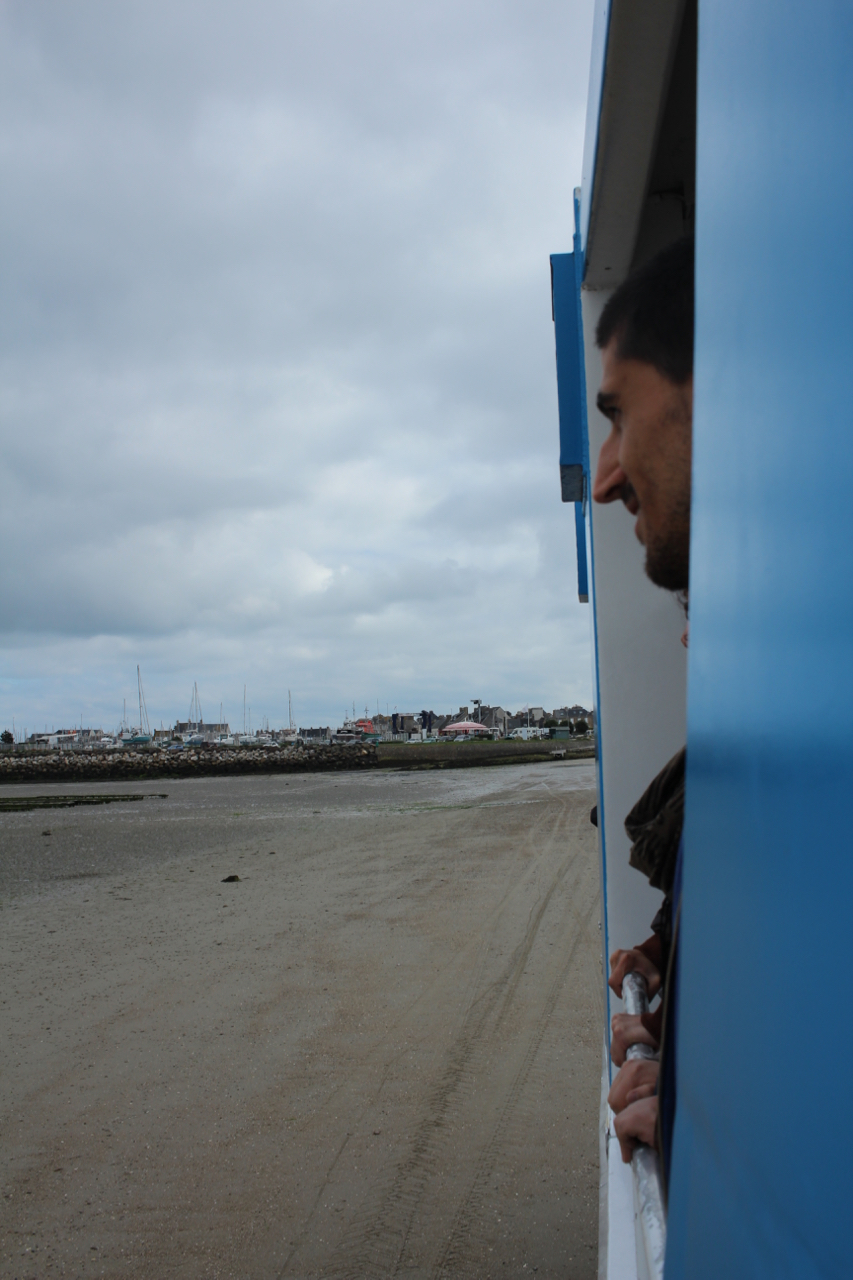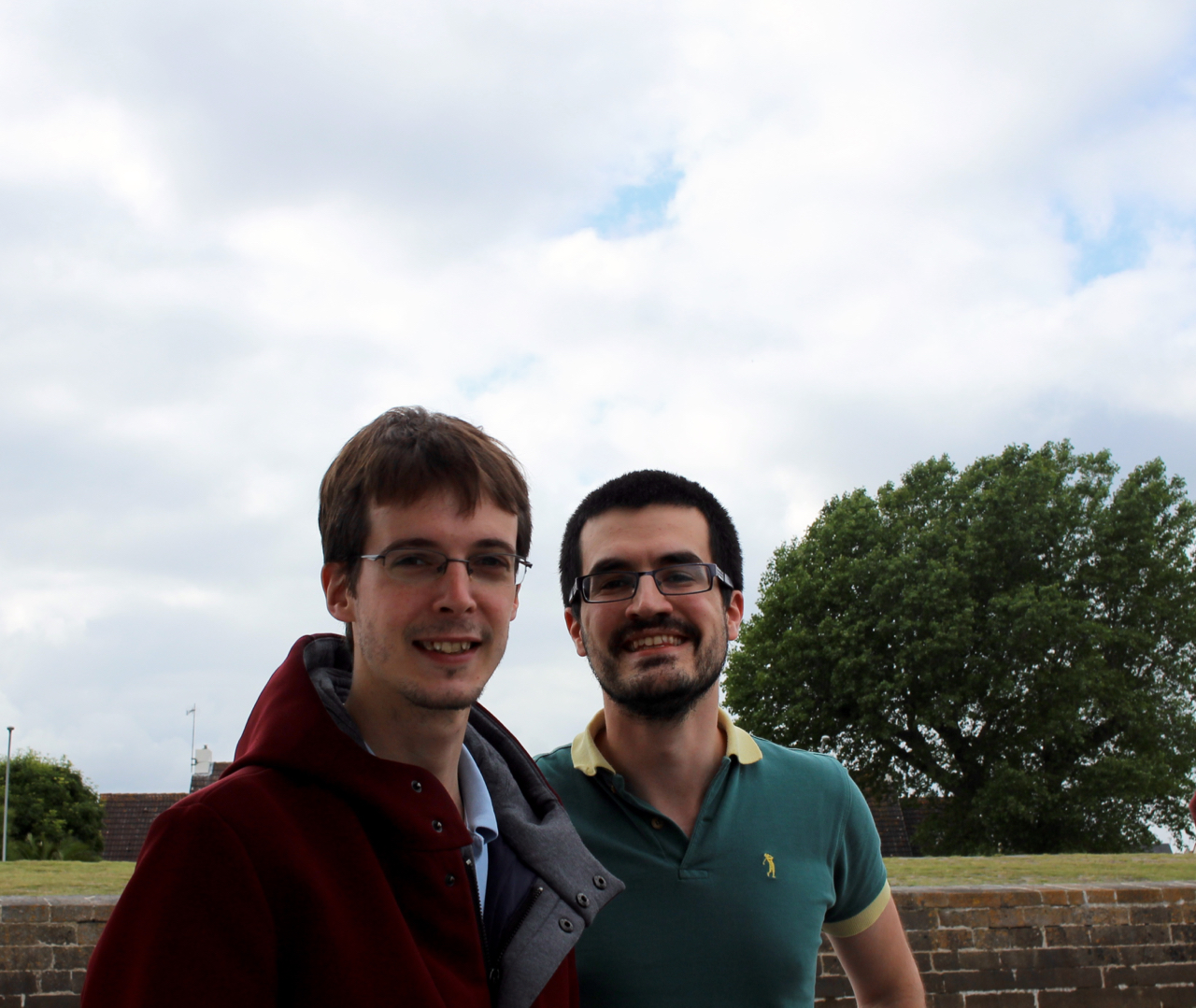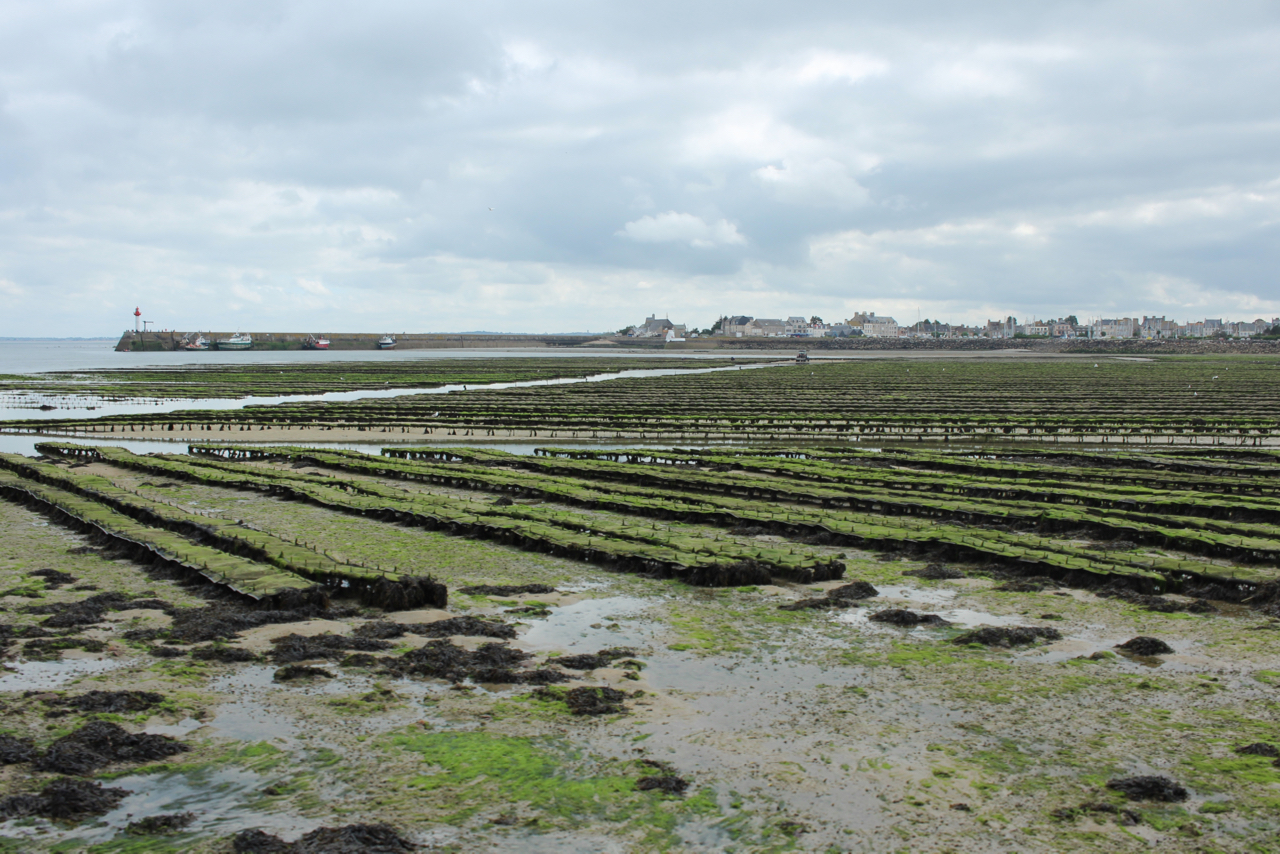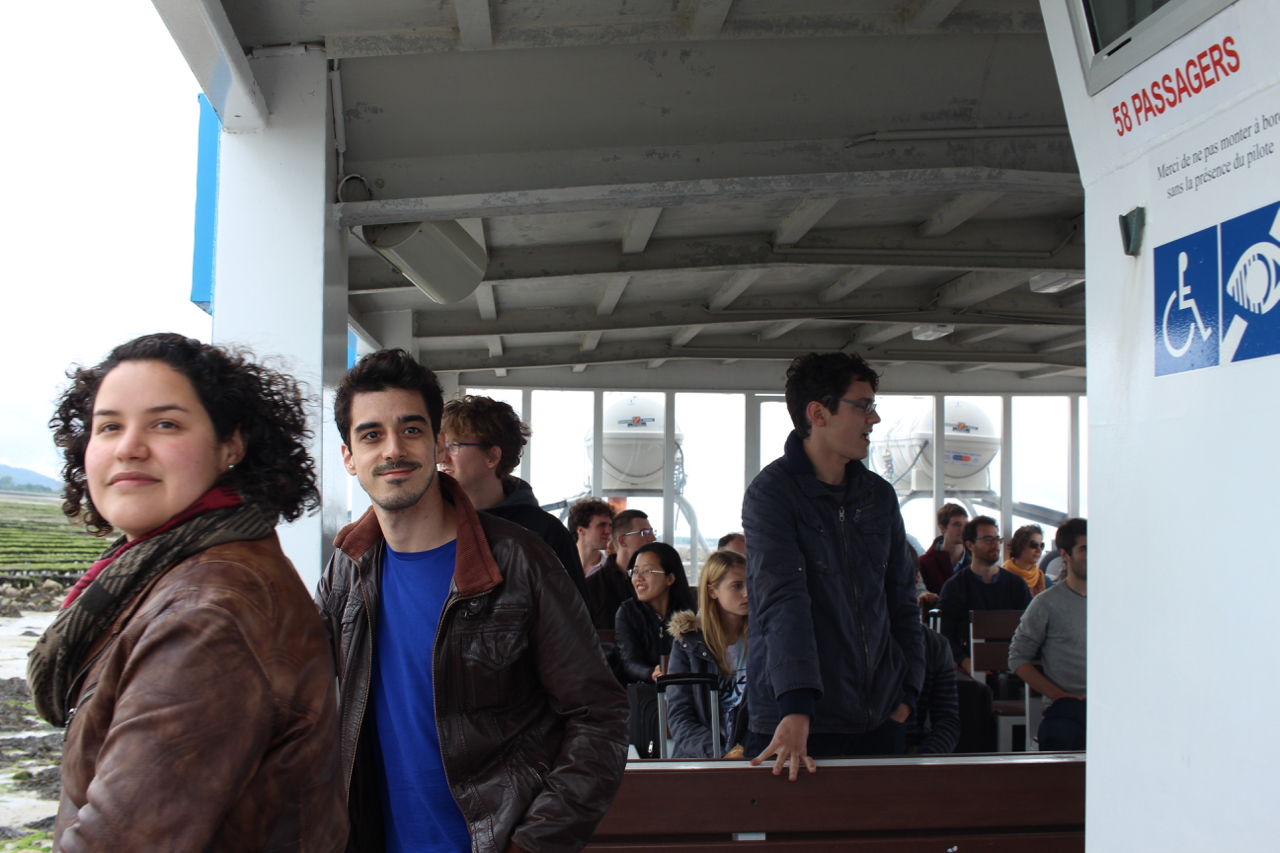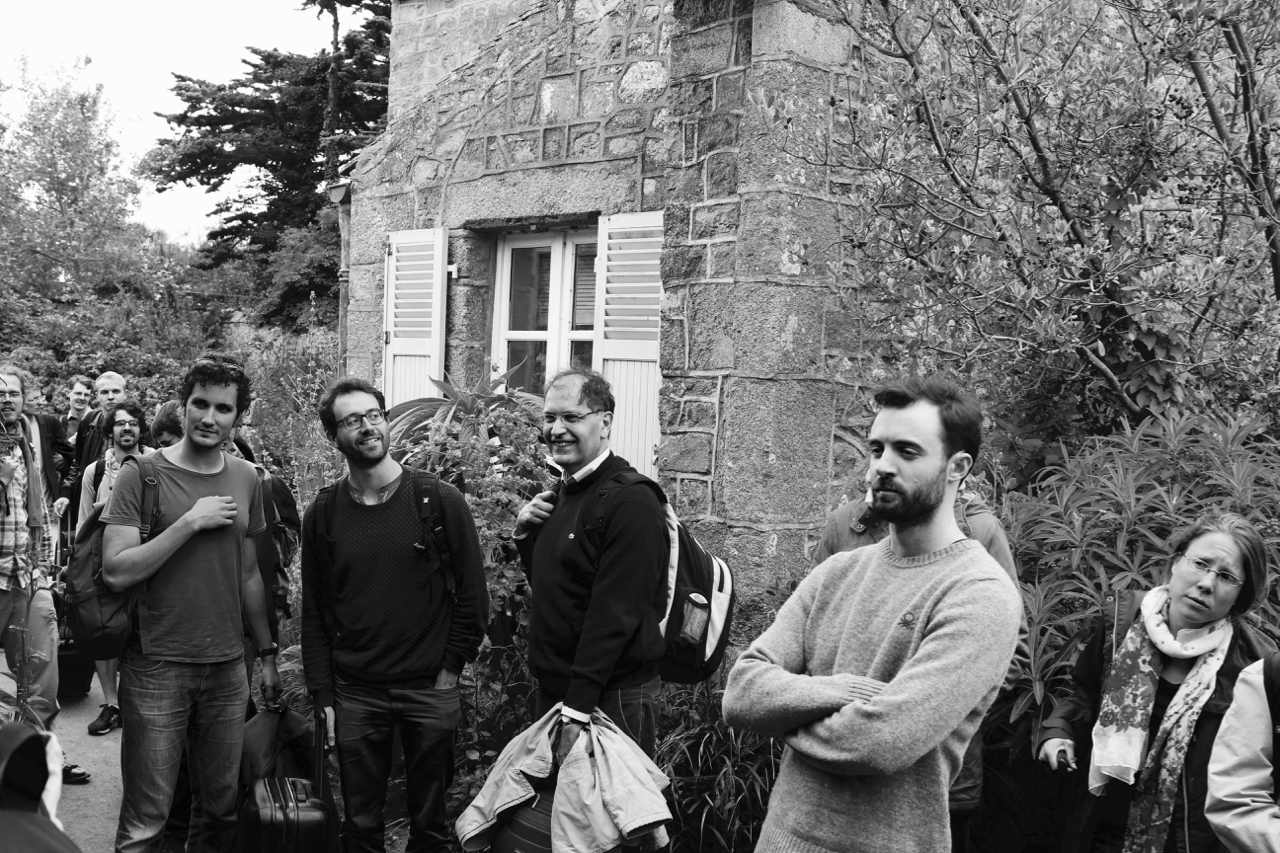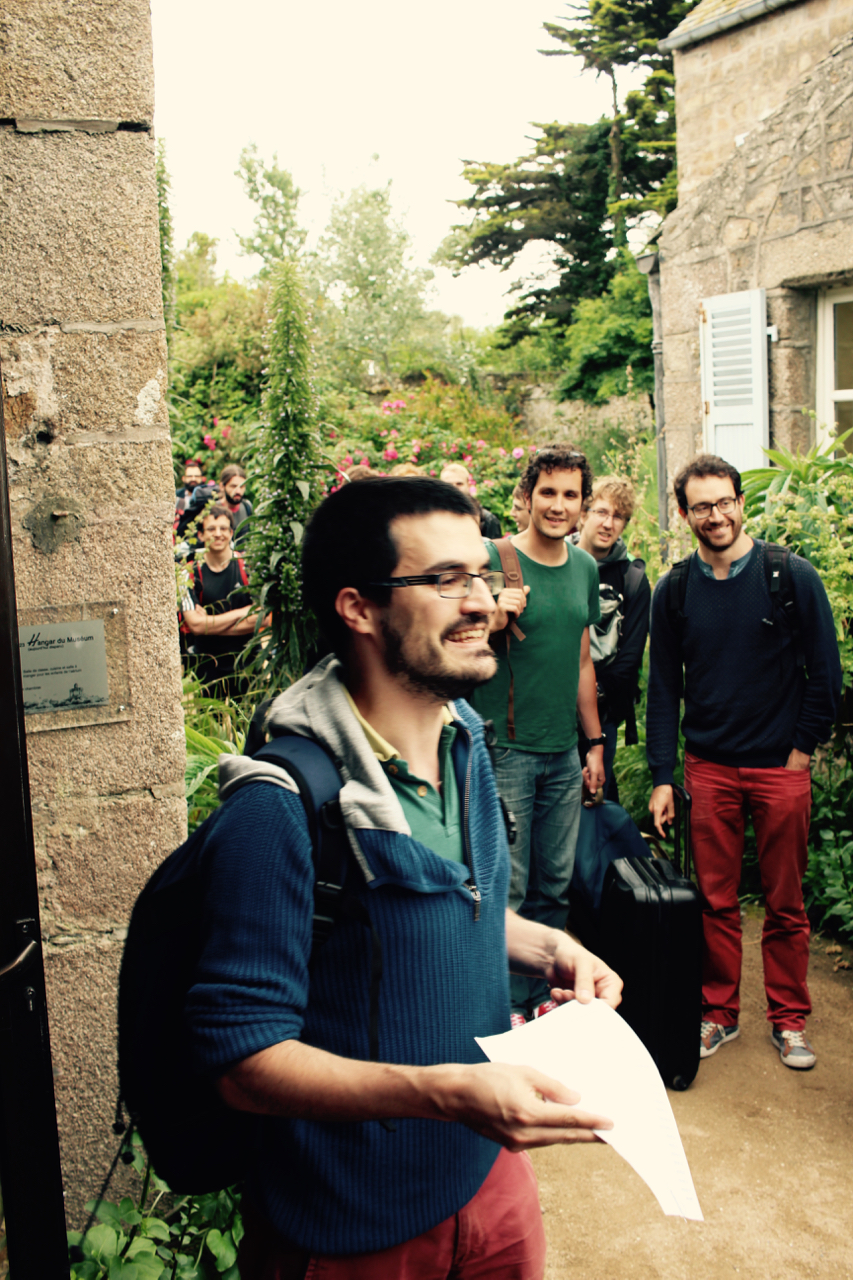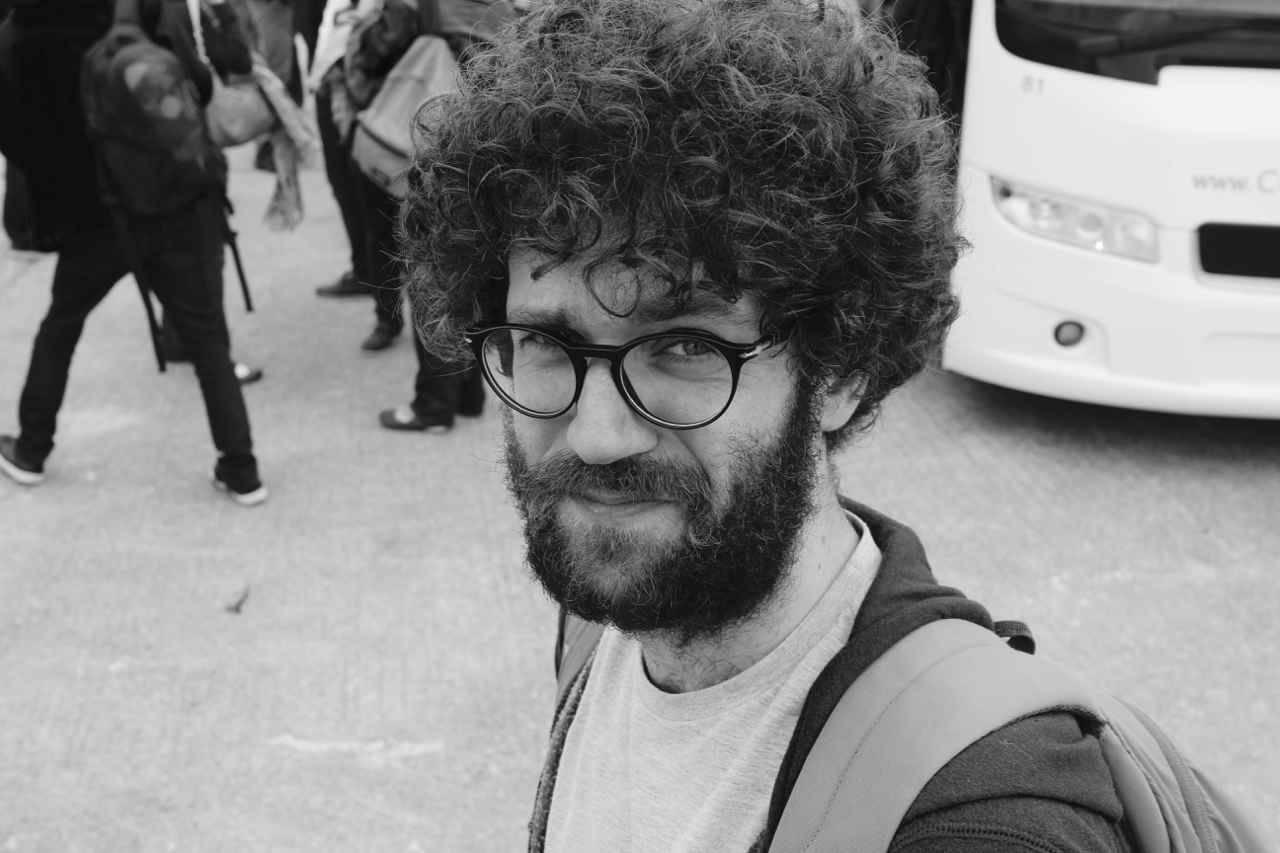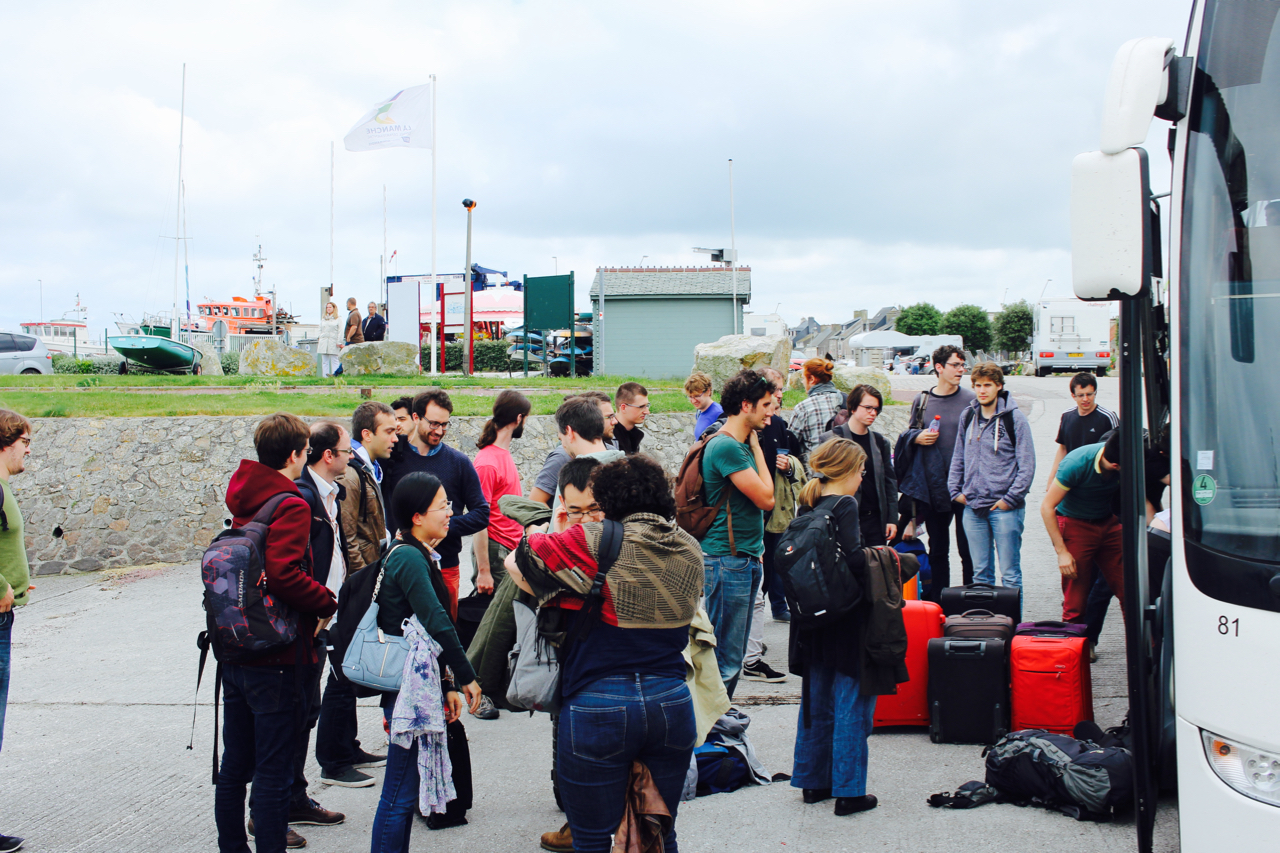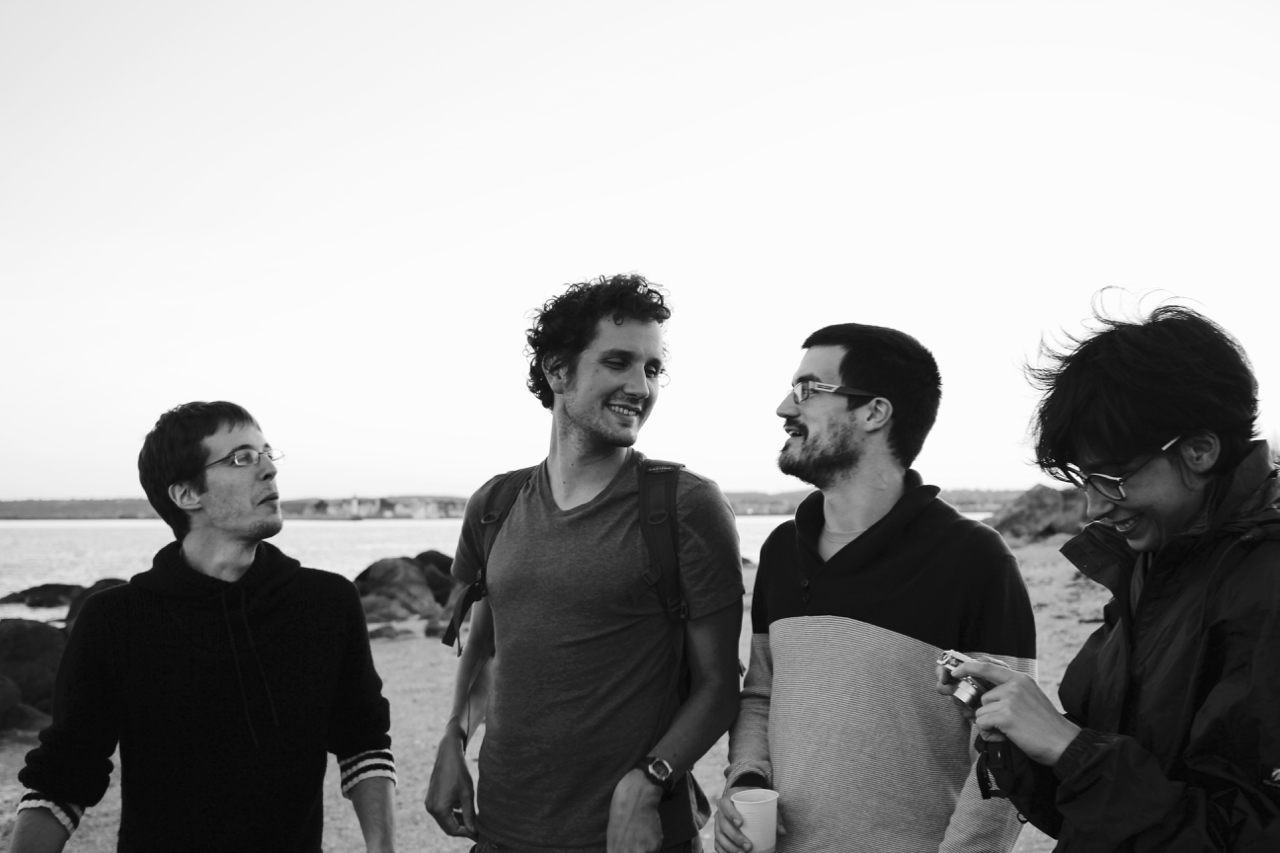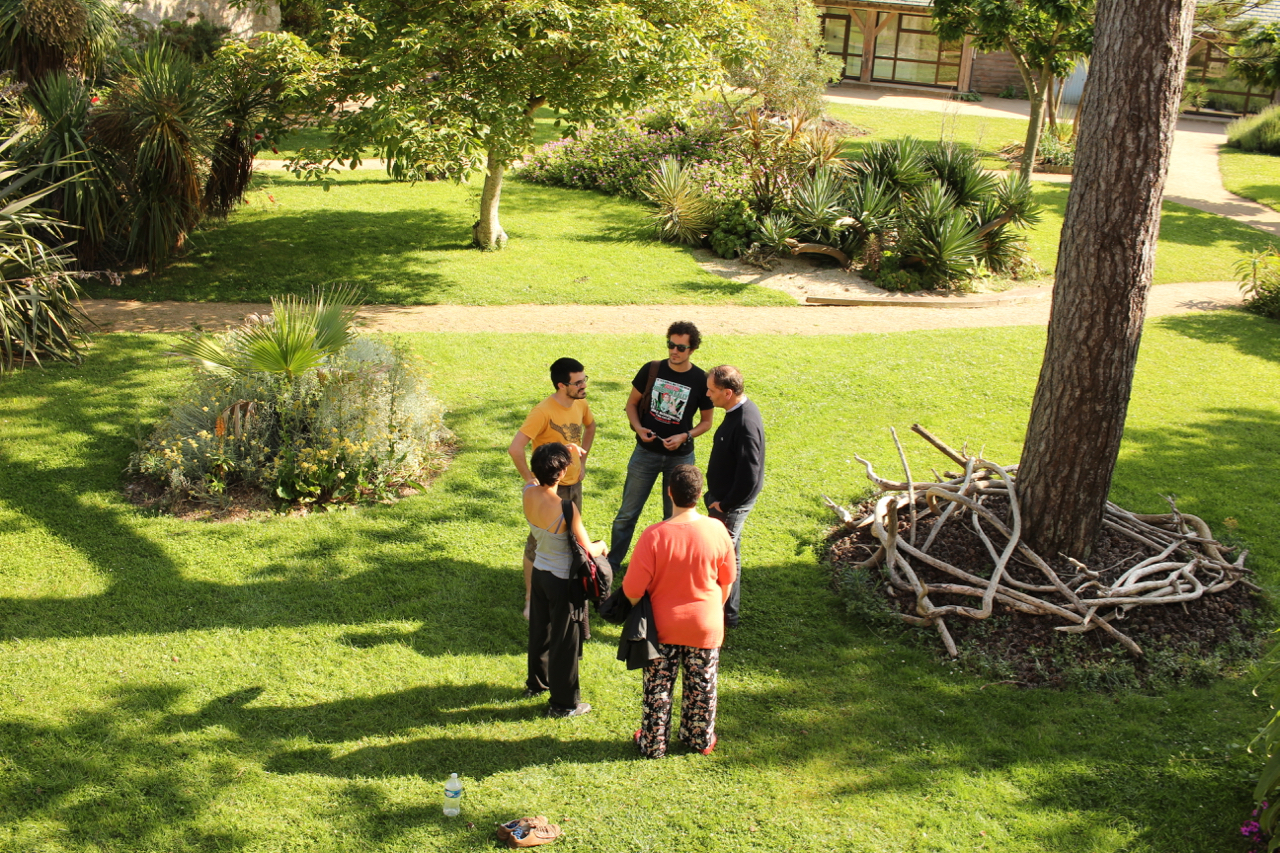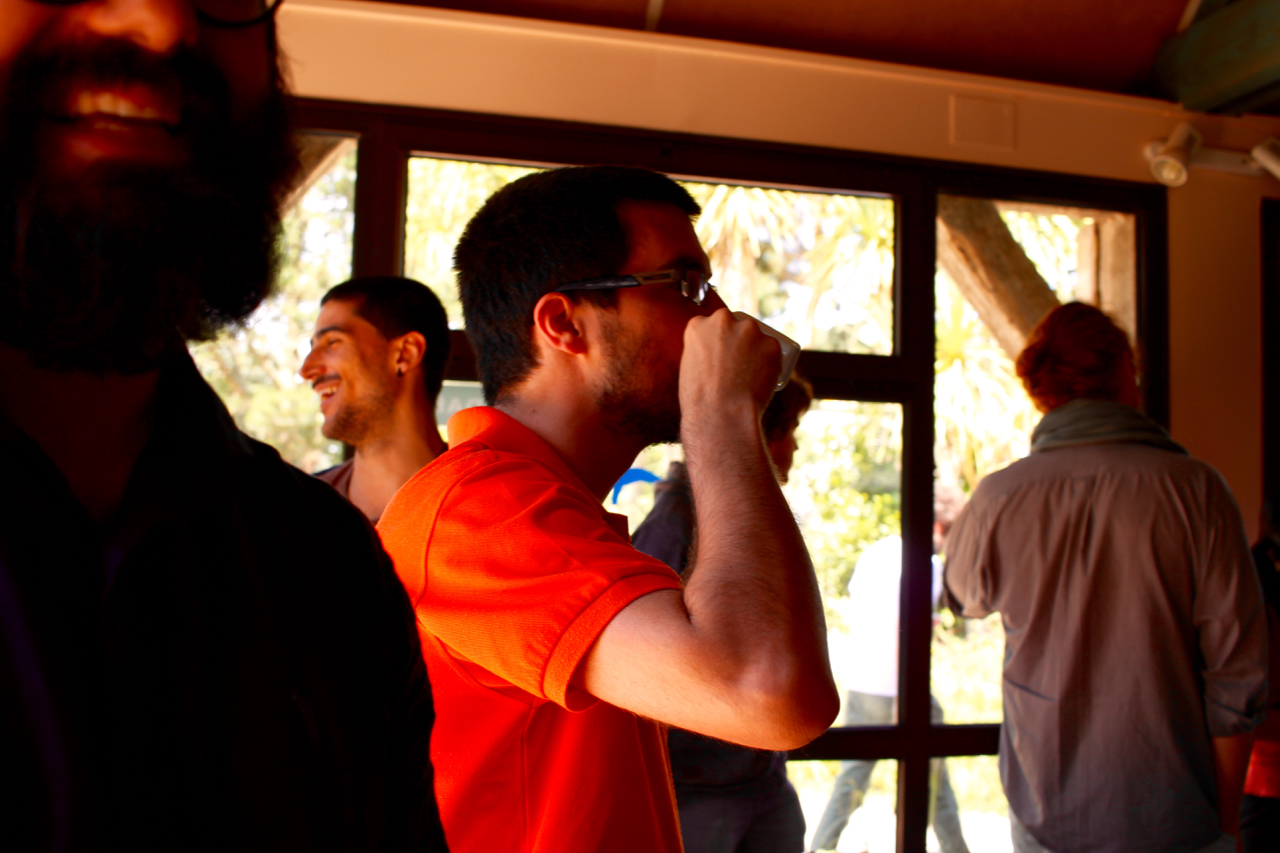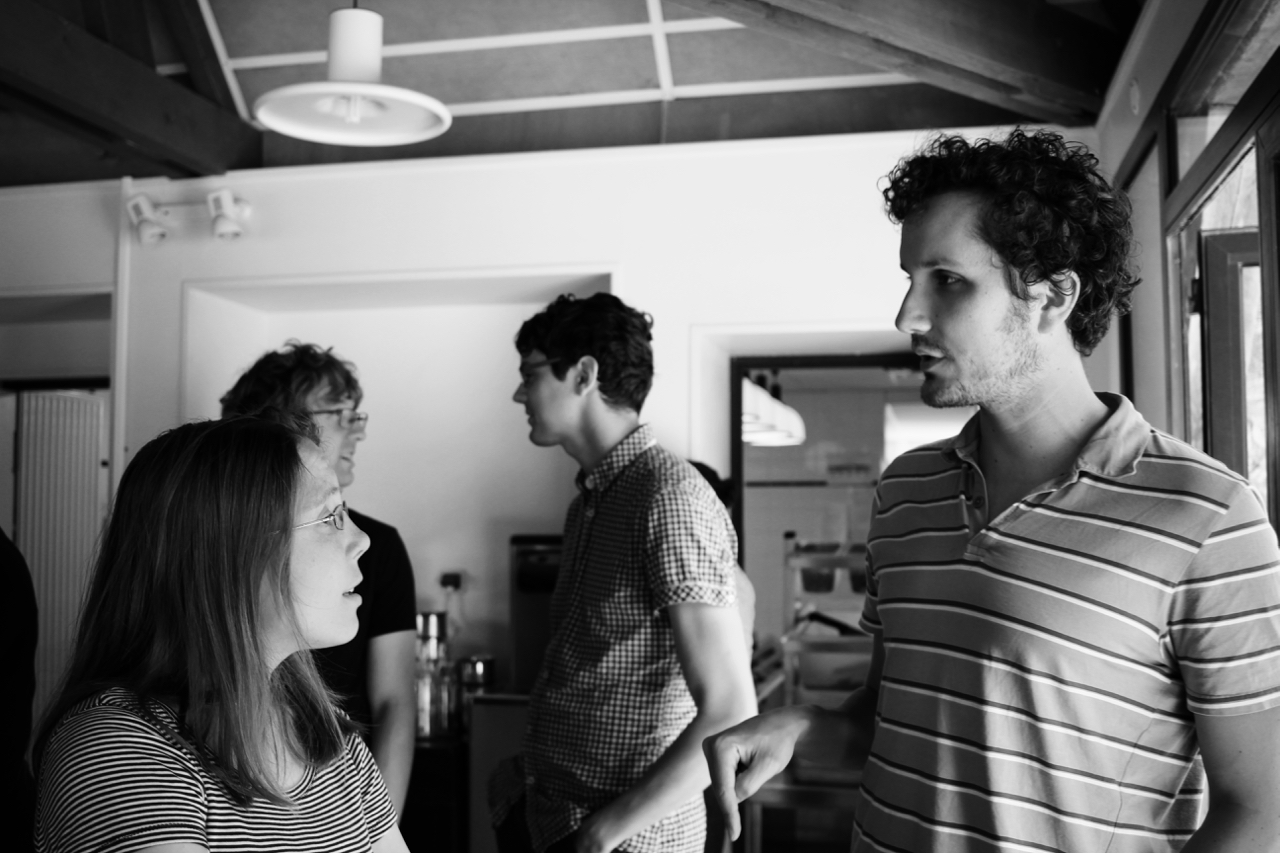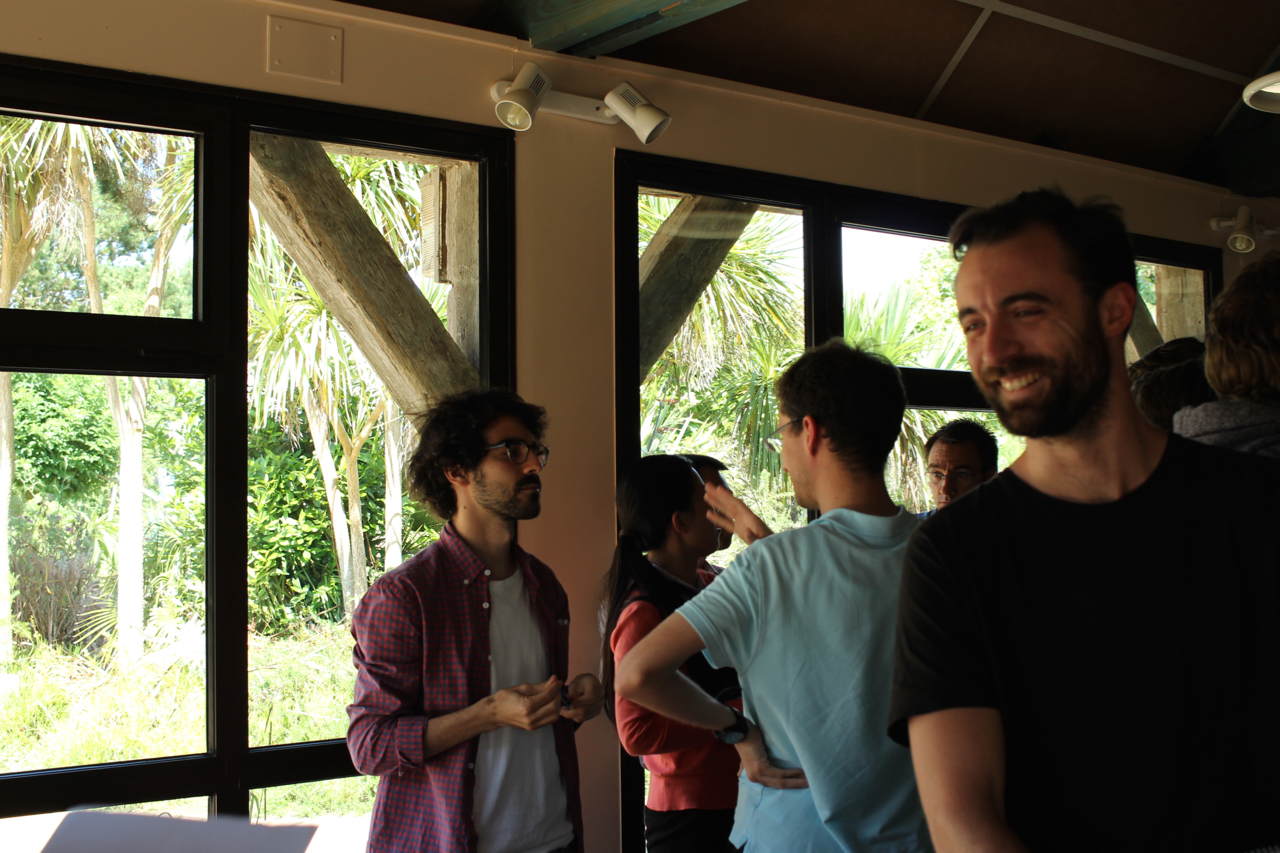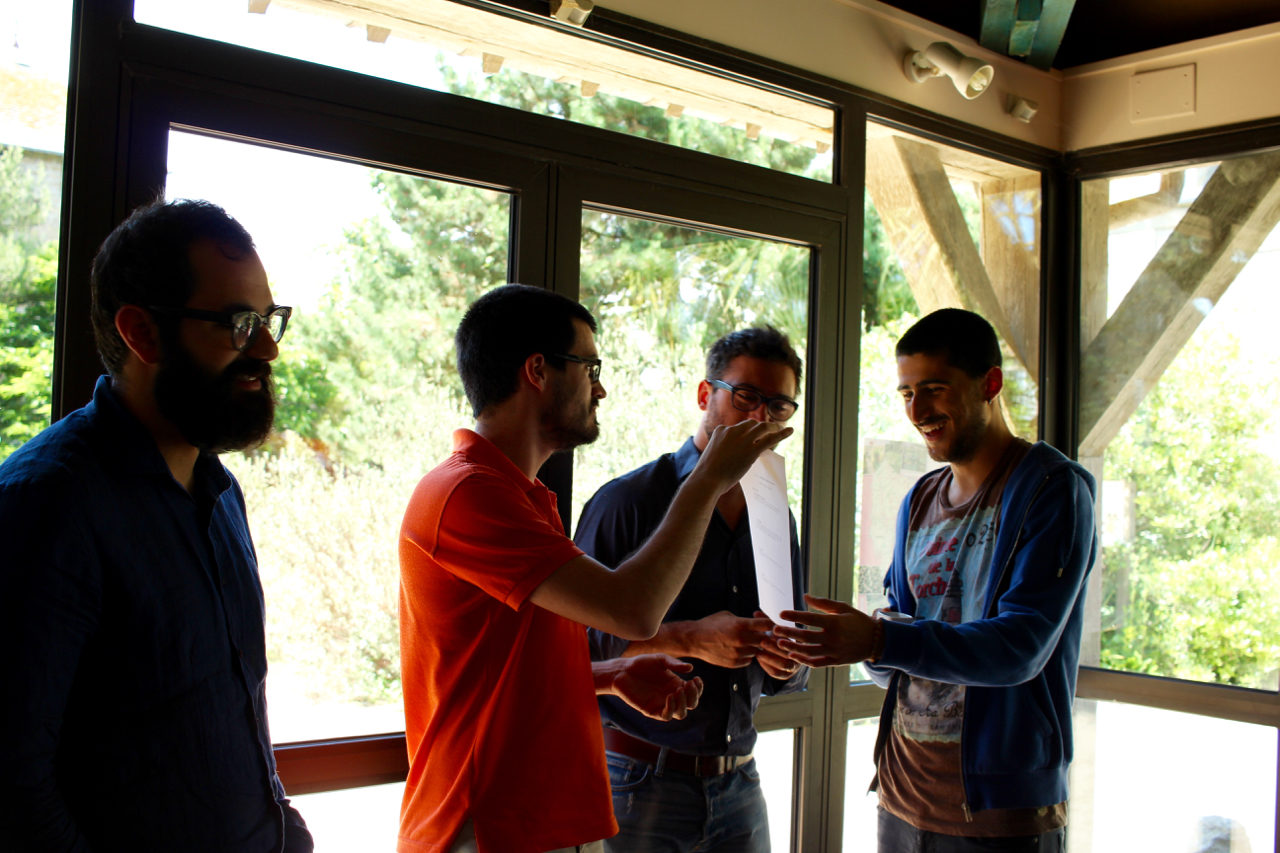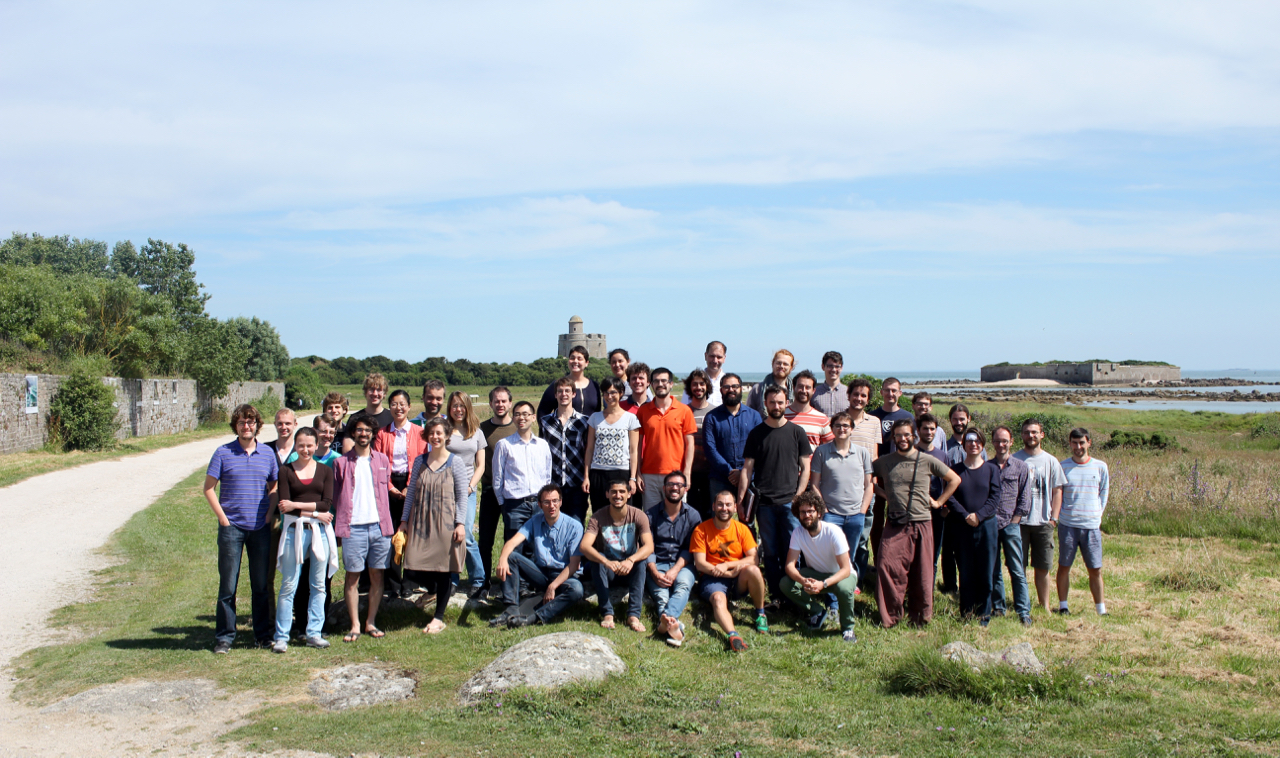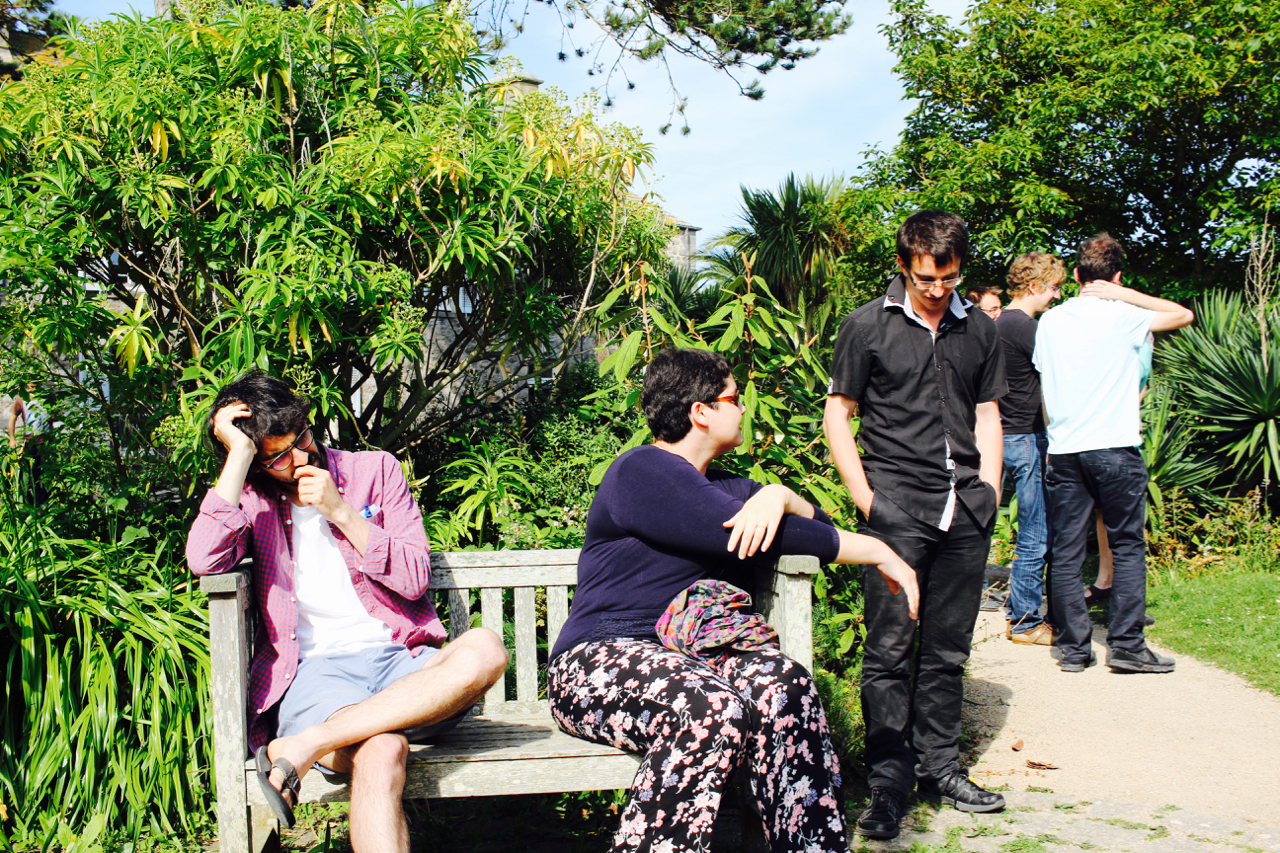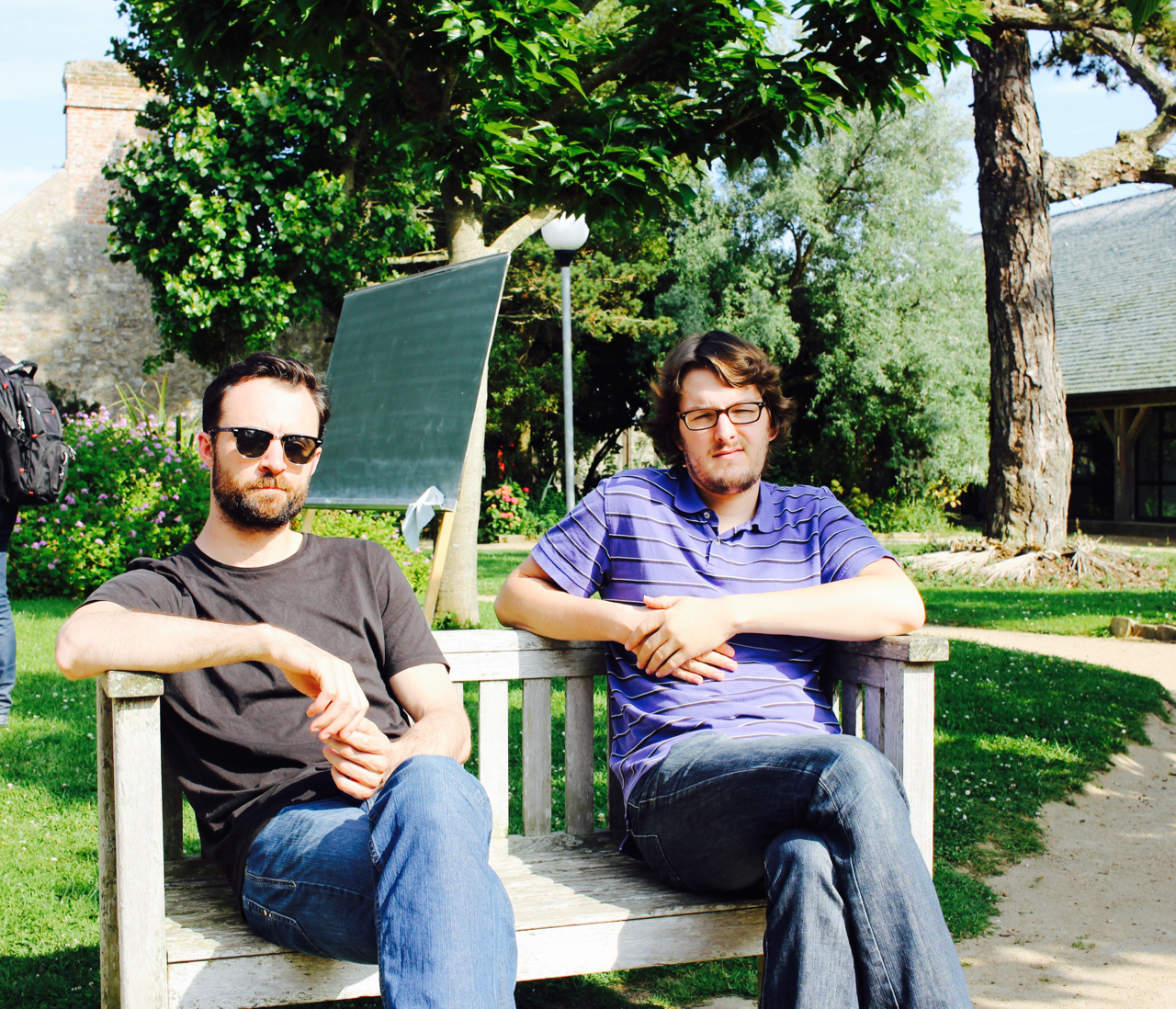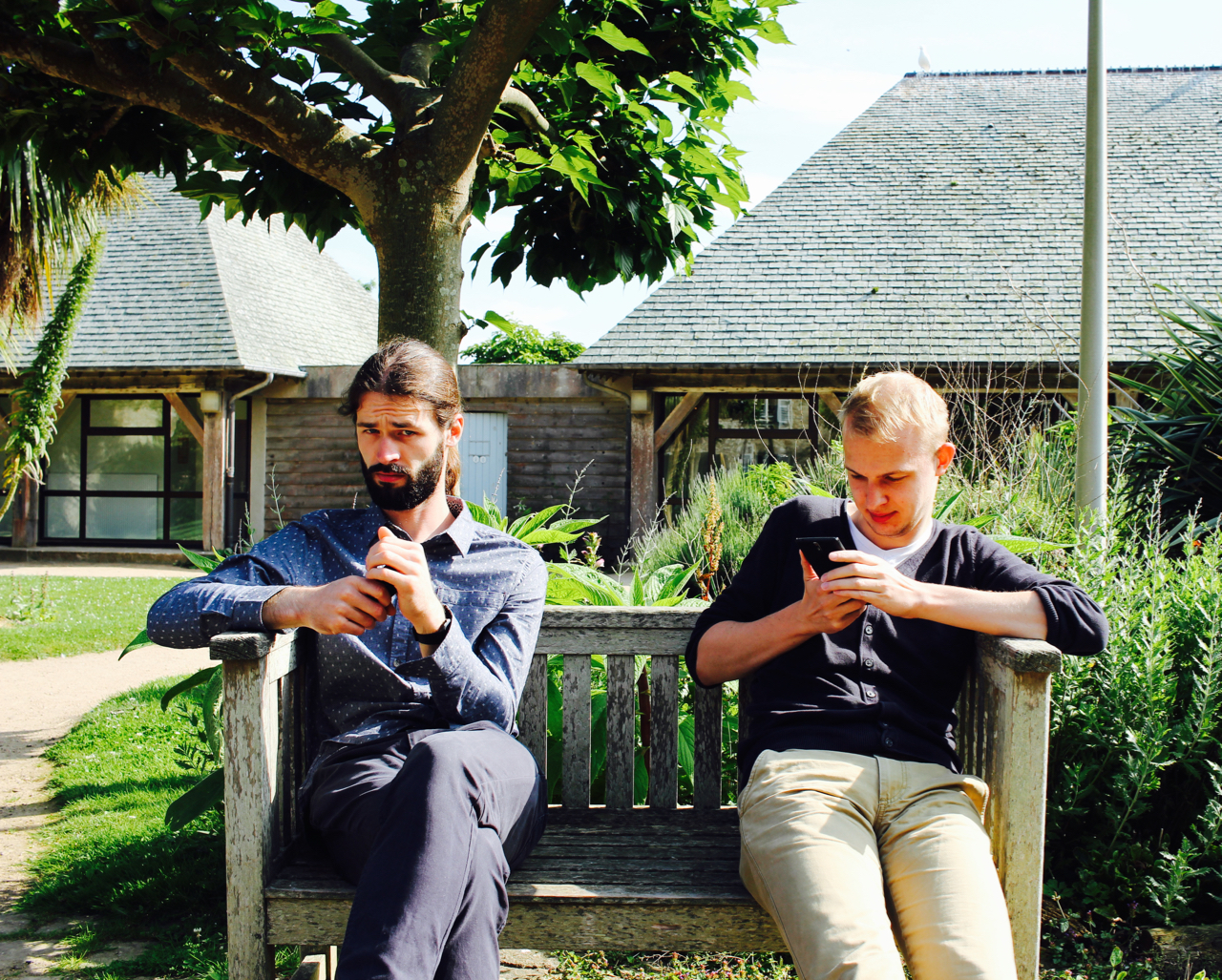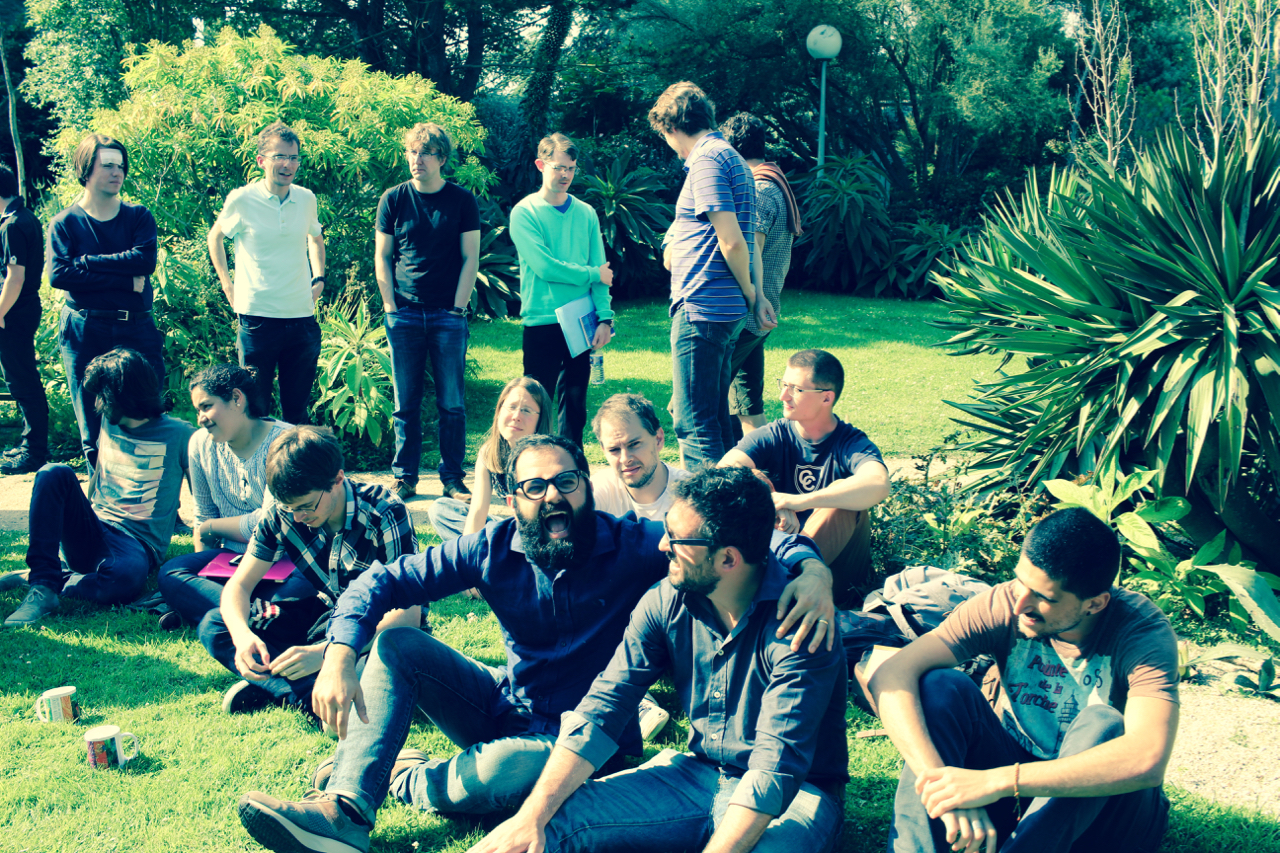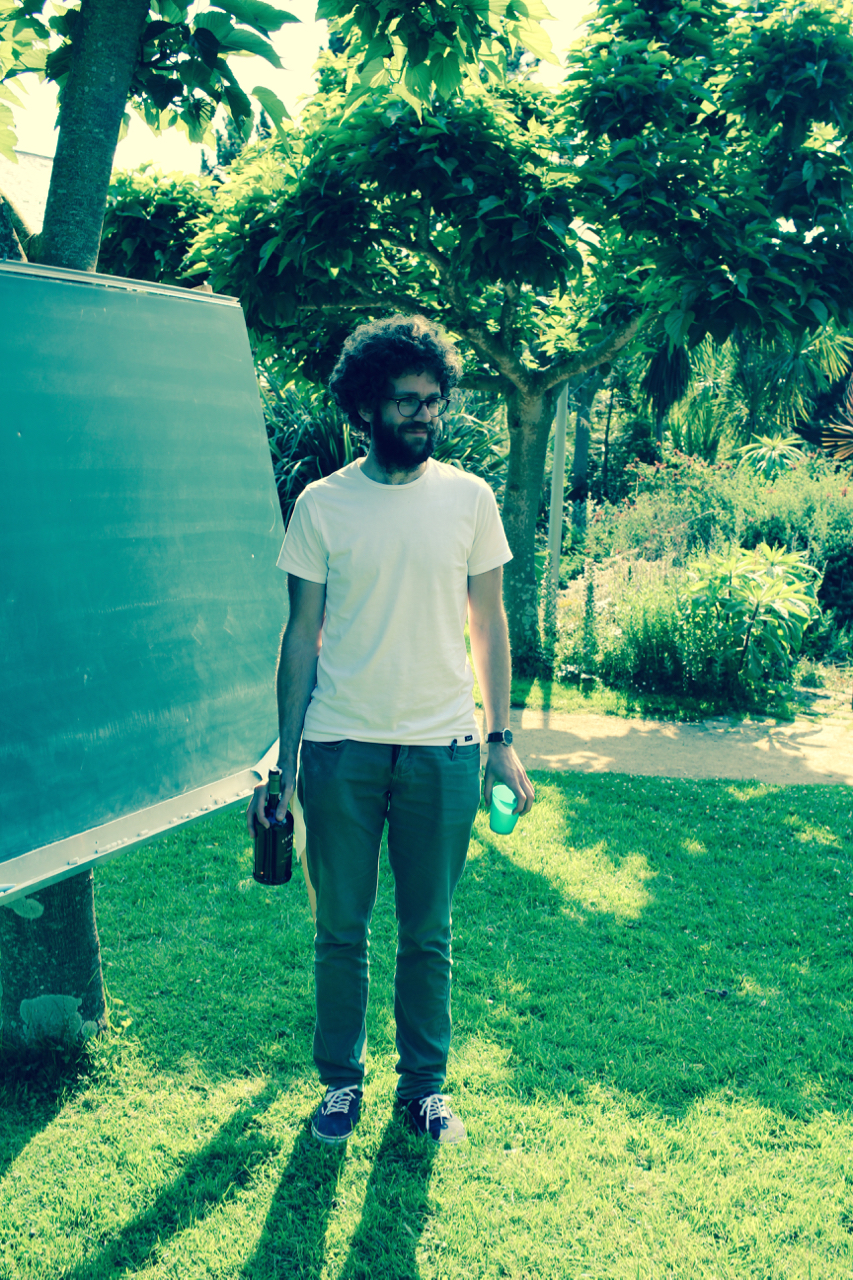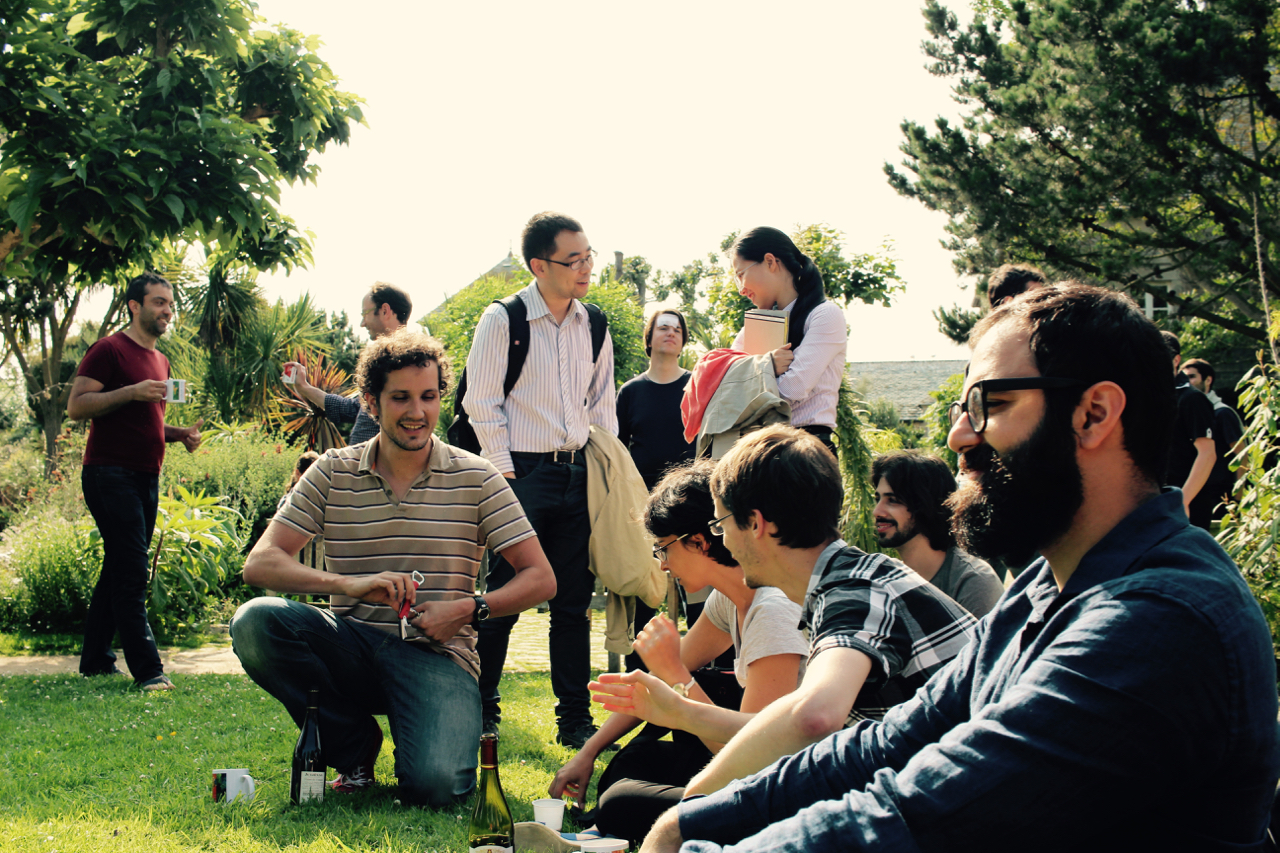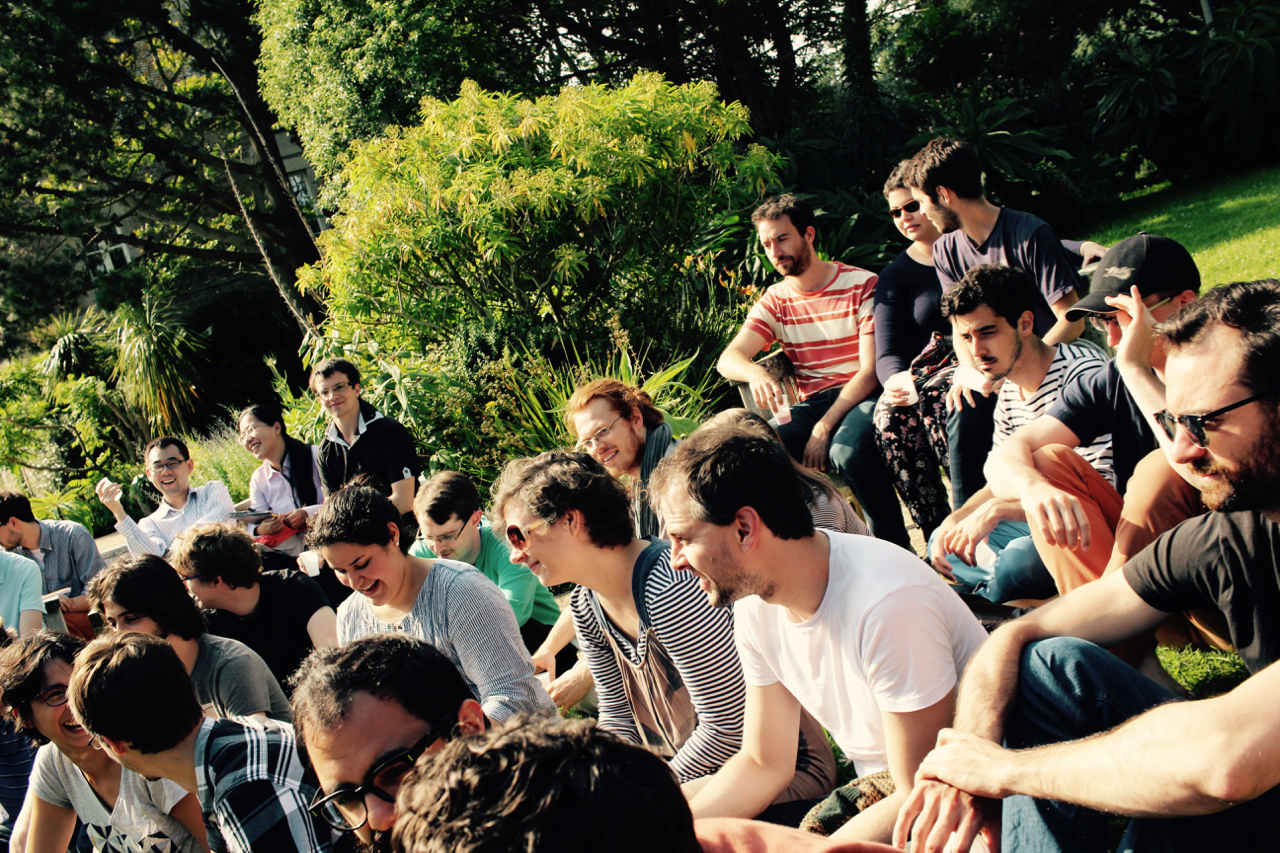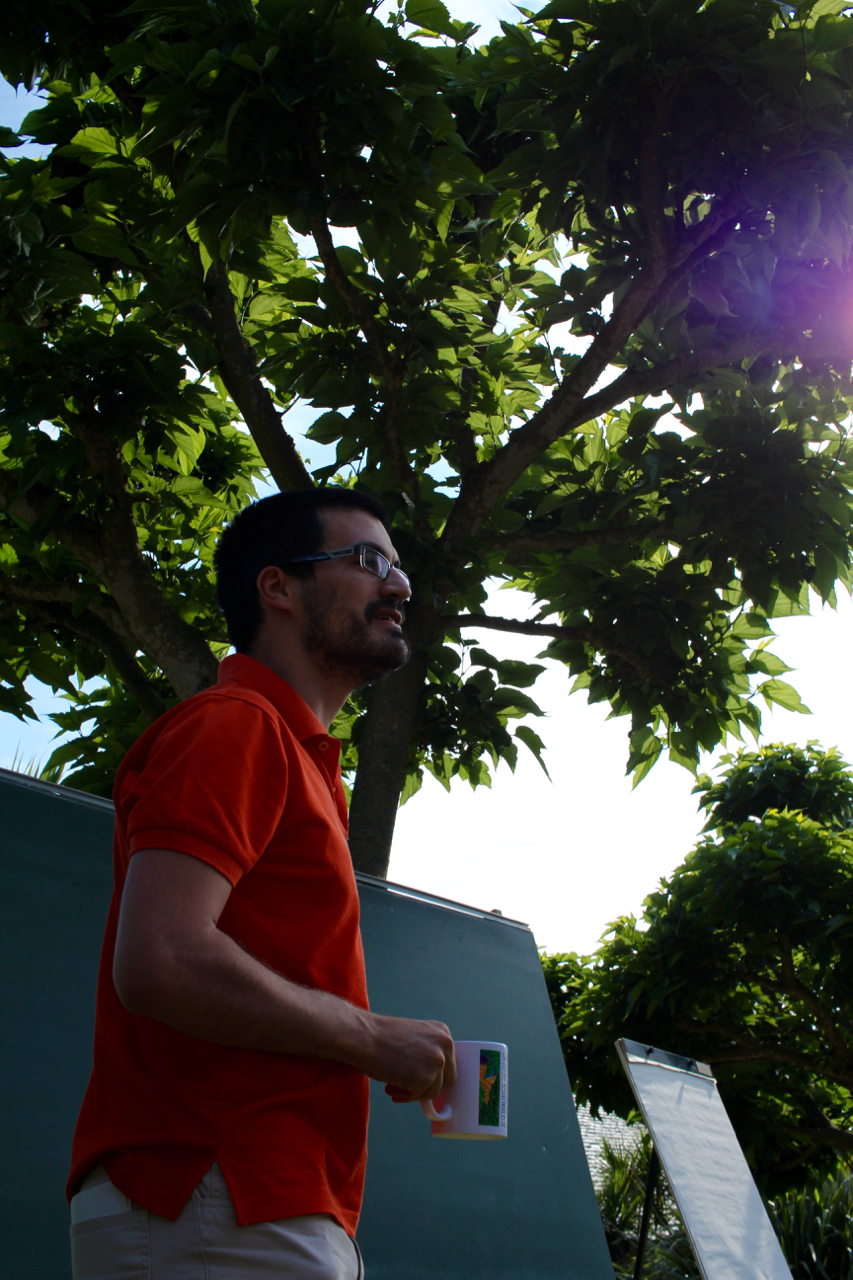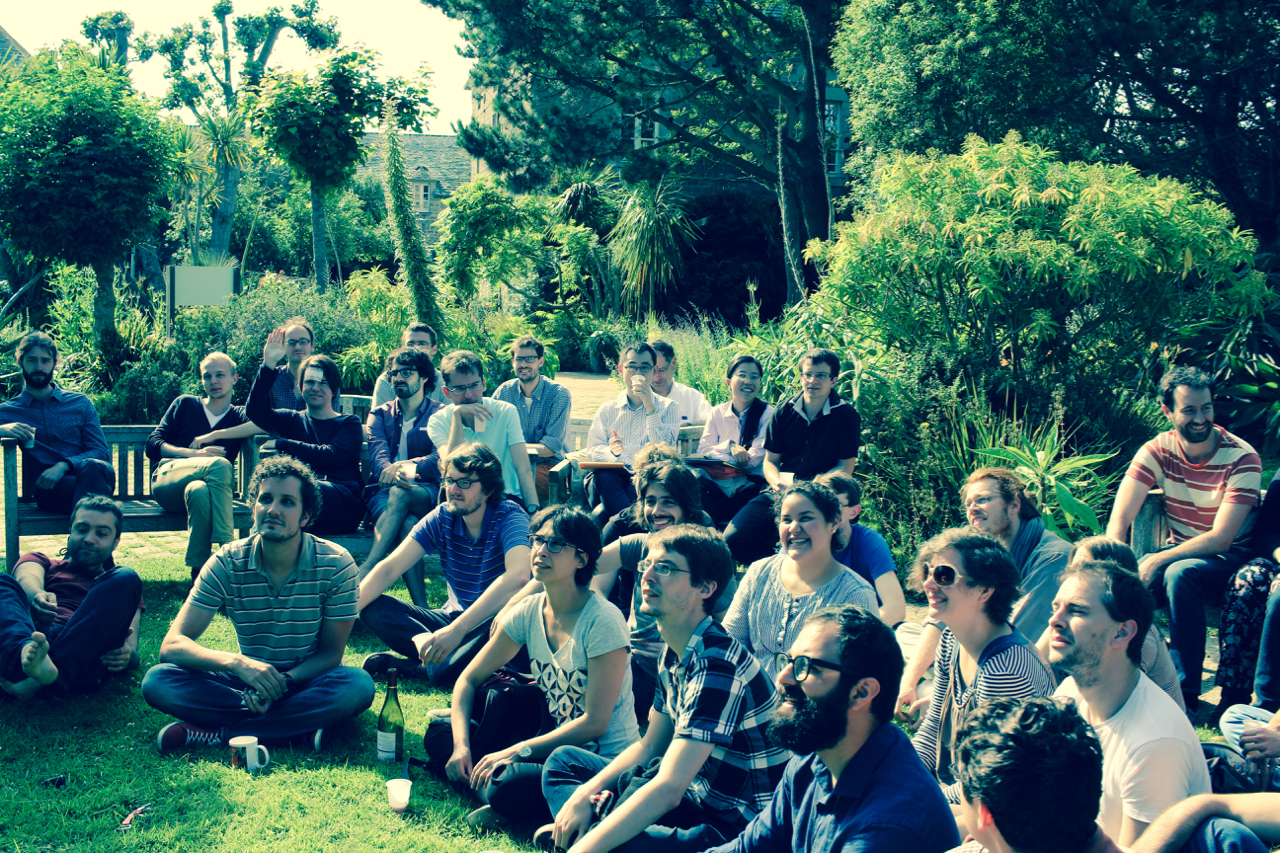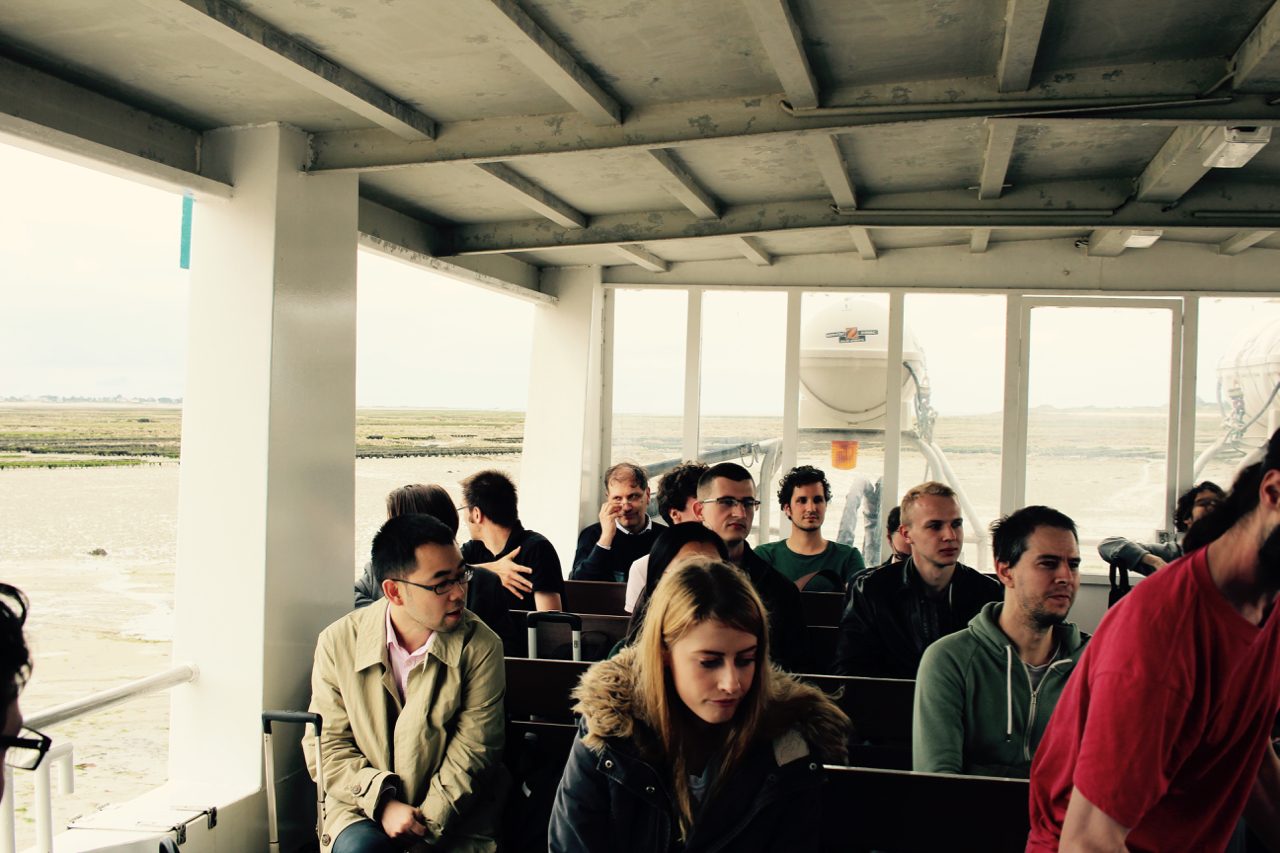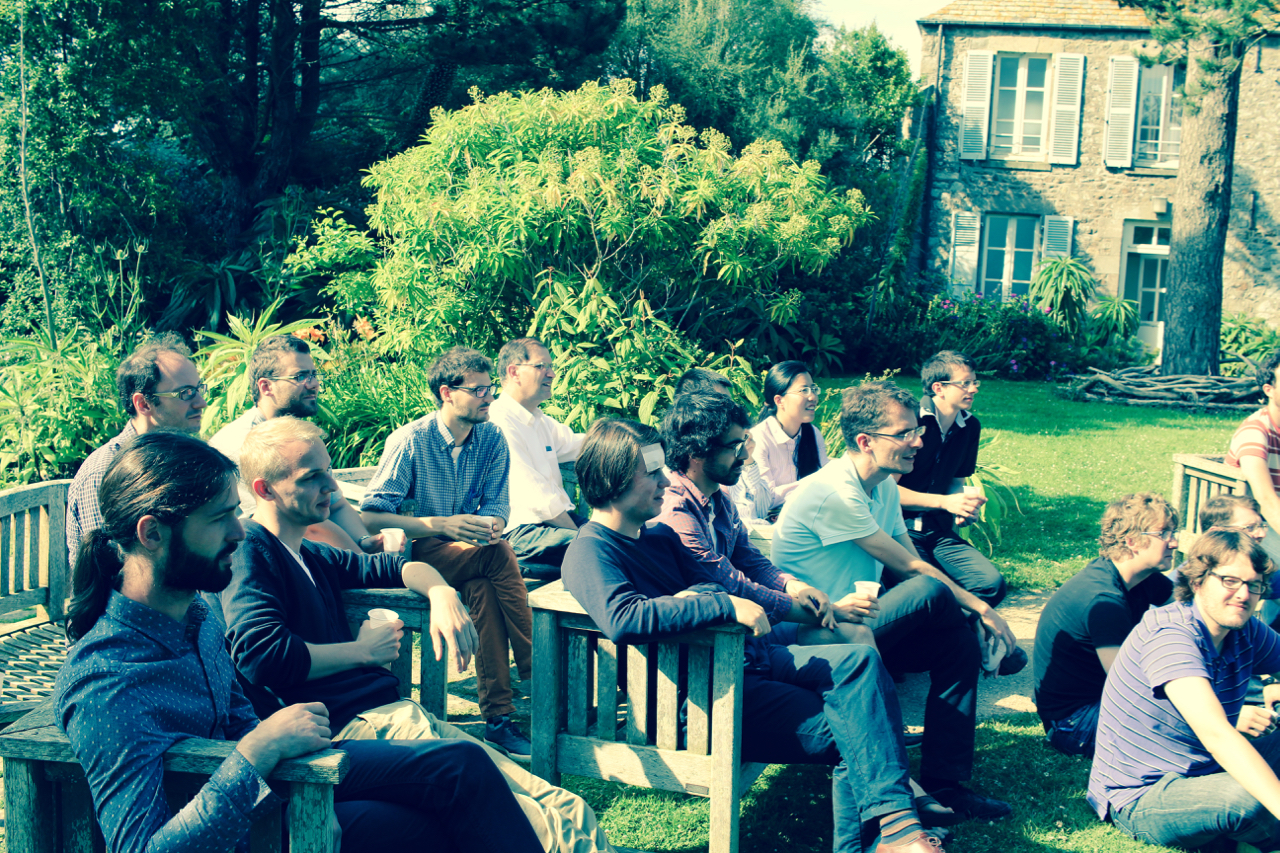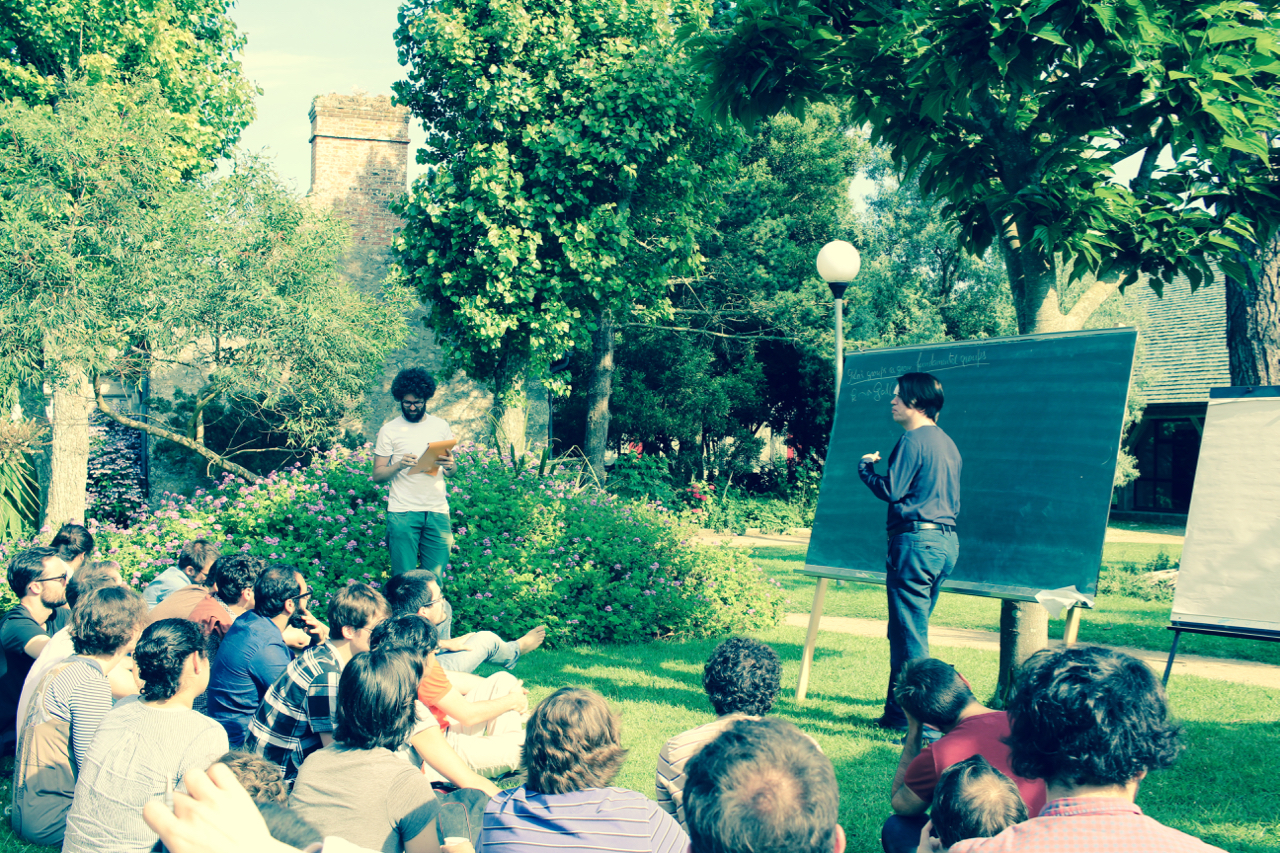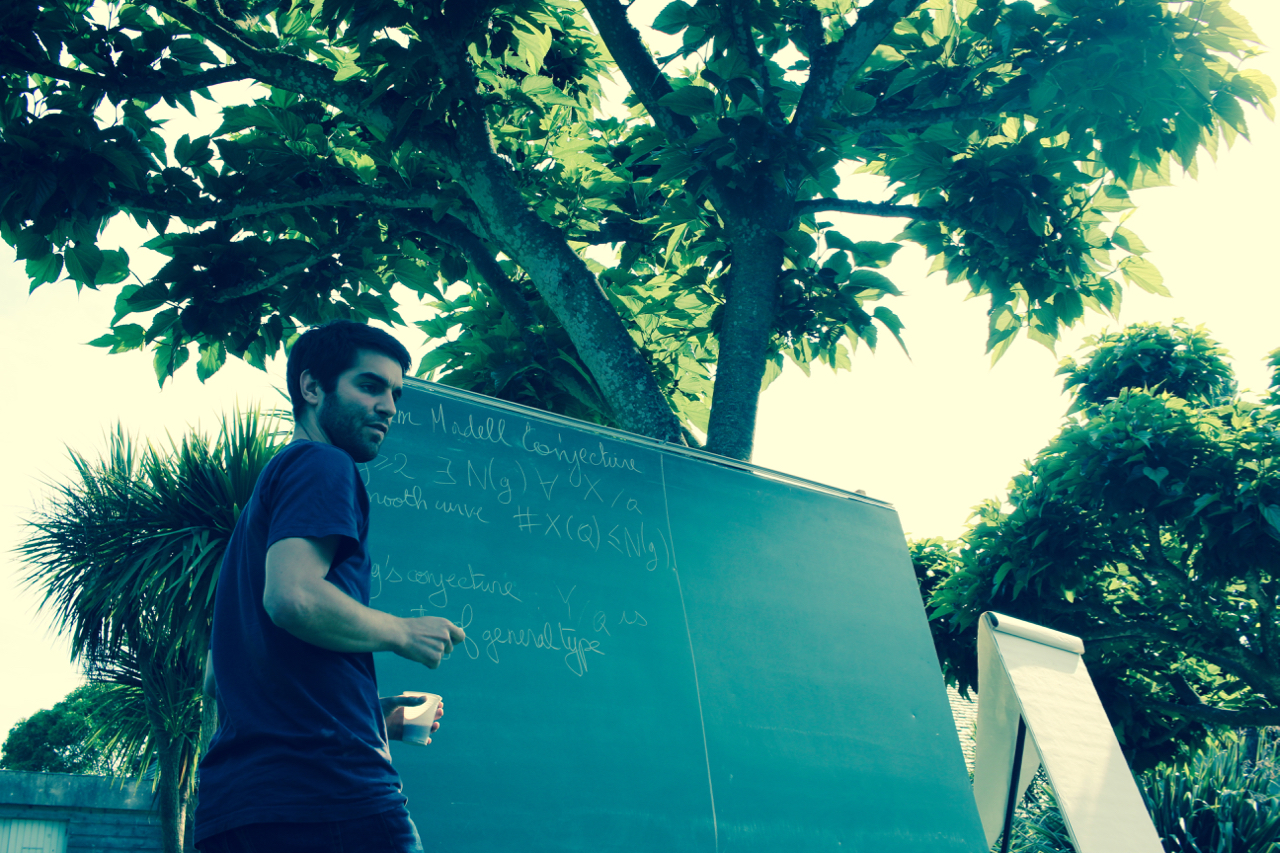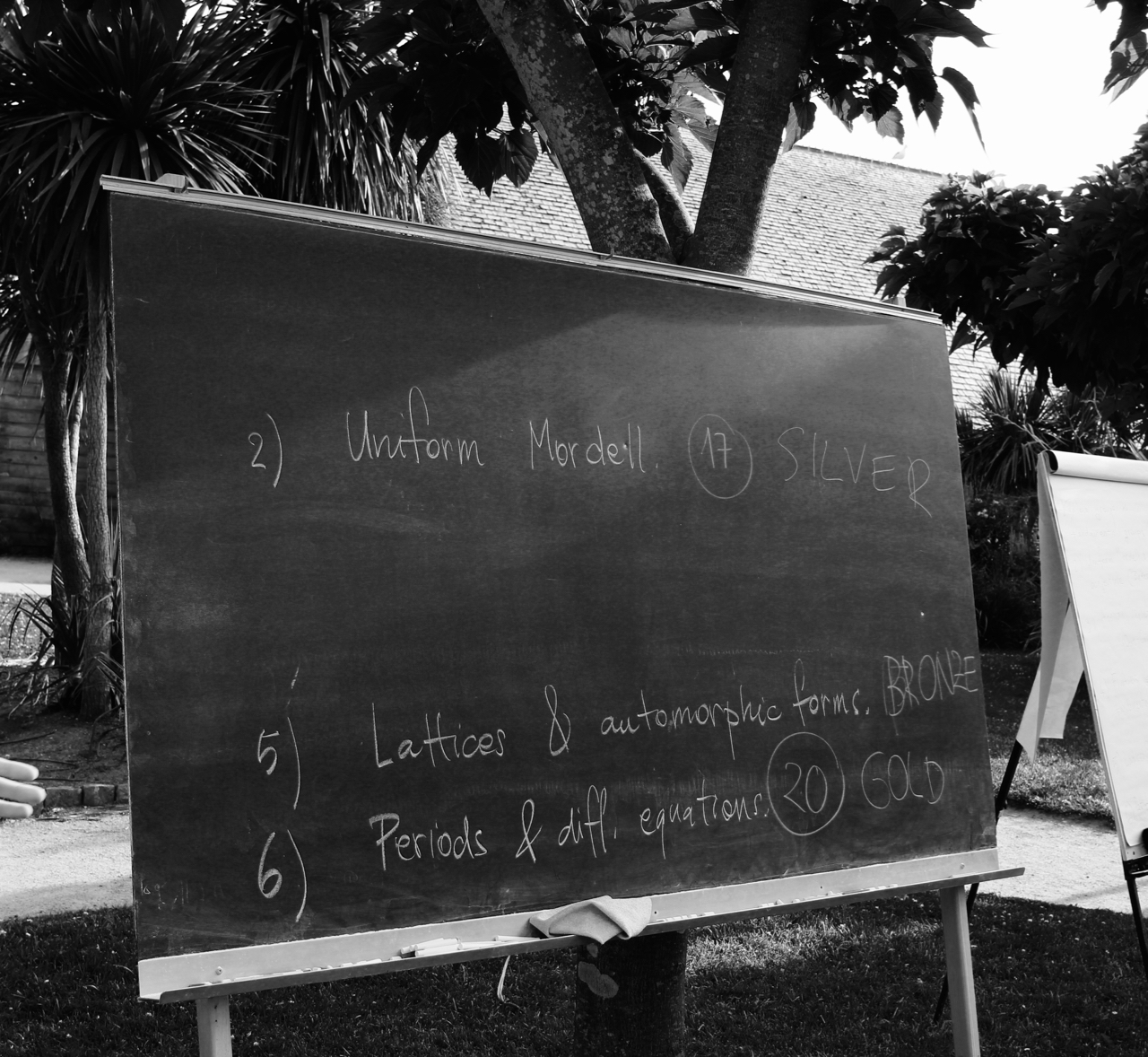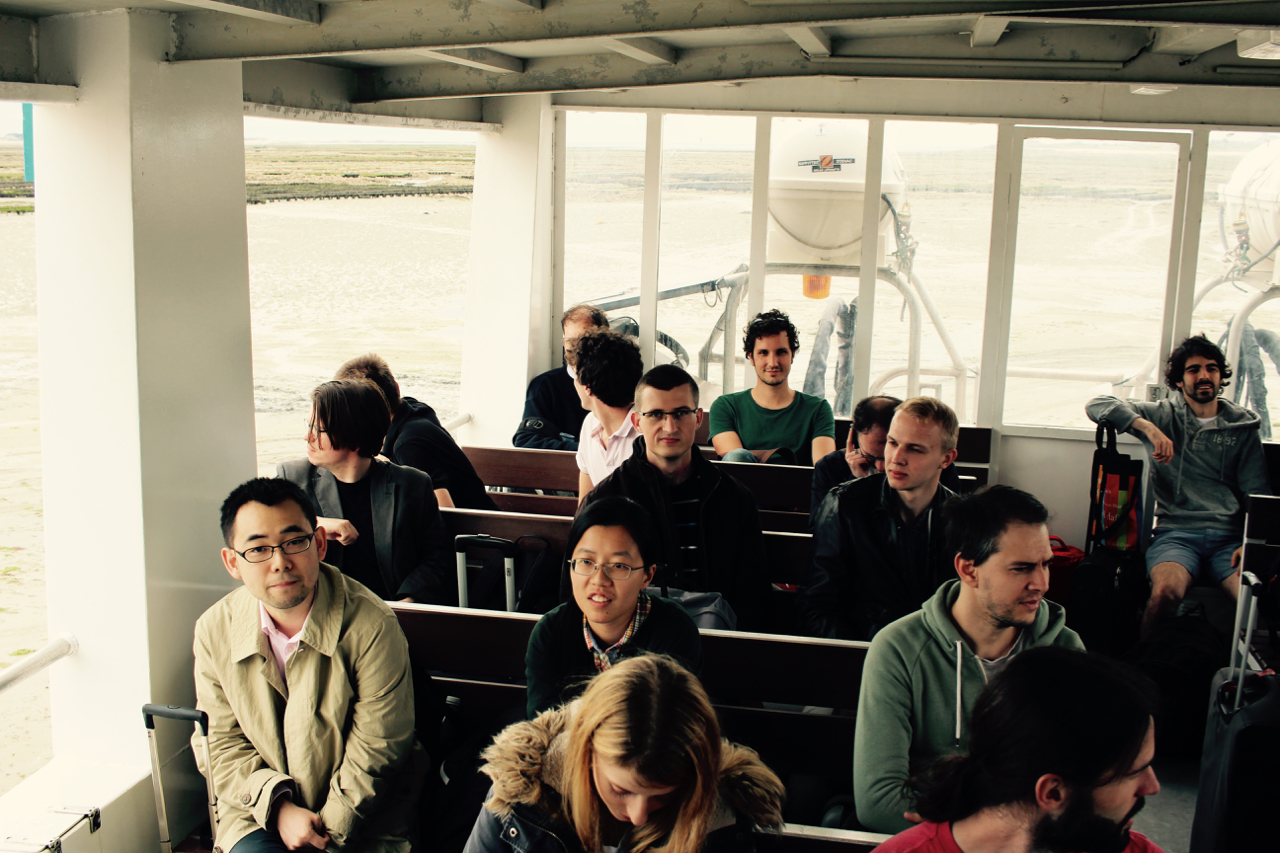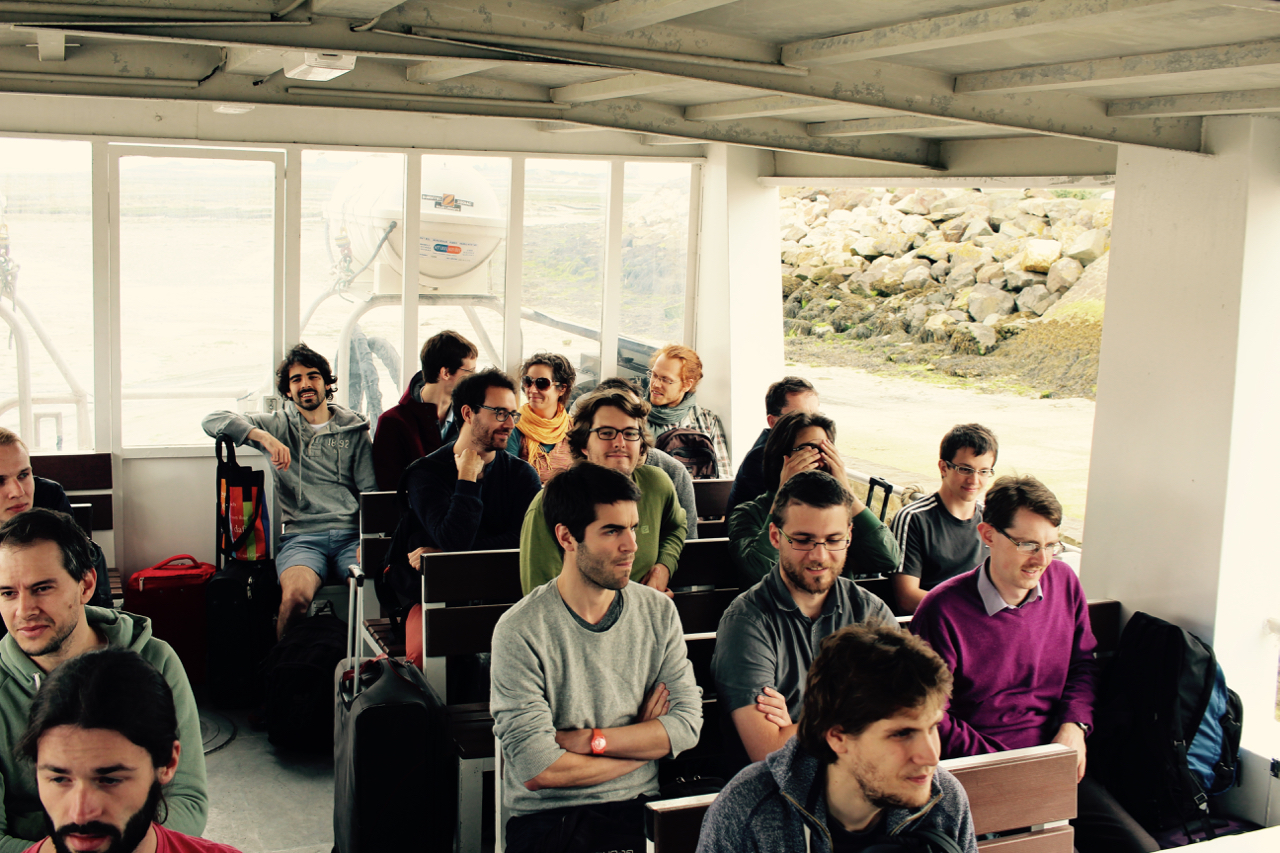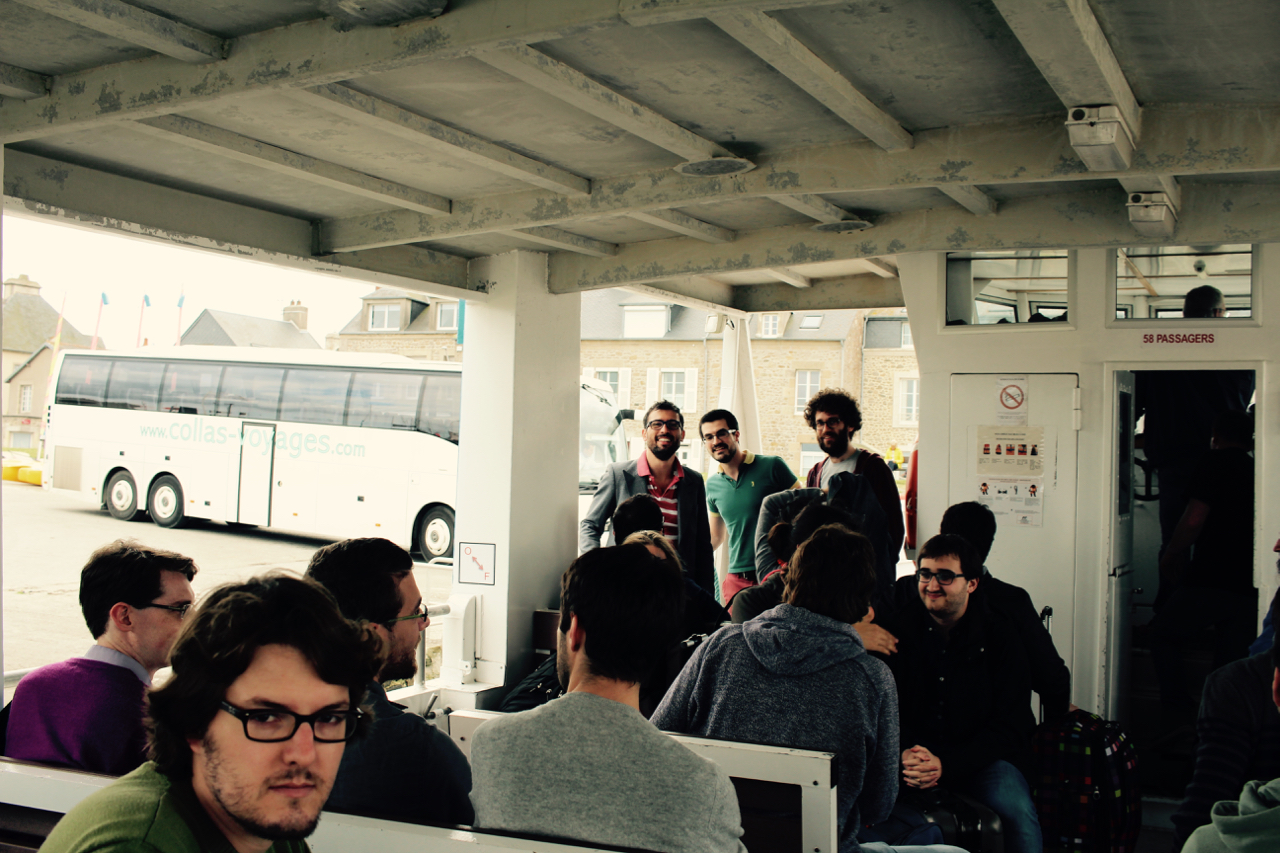Program by Jean-Benoît Bost
This educational conference, organized on the model of the
Arbeitsgemeinschaft in Oberwolfach, is devoted to diverse classical theorems in algebraic and Diophantine geometry, all pertaining to the theme of
algebraization. These theorems assert that some “geometric objects” — such as varieties, or vector bundles, or coherent sheaves — defined in some “analytic” or “formal” categories are actually algebraic, under suitable additional assumptions, involving for instance global complex geometric or arithmetic conditions.
The aim of the conference is to provide an introduction to these classical results, accessible with minimal prerequisites that will emphasize the relations between topics traditionally considered as disjoint, notably
transcendence and Diophantine approximation techniques on the one hand, and
algebraization theorems in analytic and formal geometry on the other.
This point of view has already been advocated in the articles
[Bos01],
[Bos04],
[Gas10] and
[Her12]. It is also presented in the expository papers
[CL02],
[Bos06], and
[Bos13], that should be used as introductions to the circle of questions discussed in this conference.
A few years ago, I started to write some lectures notes, based on diverse series of lectures I had delivered on Diophantine approximation techniques and algebraization. These notes [IN] are infortunately still incomplete, but might be useful for preparing some of the talks in the conference. They will be distributed to the participants in charge of these talks. Hopefully, a revised version of the notes will be distributed to all participants at the beginning of the conference.
Timetable
I. GAGA
The purpose of the first two talks to review some classical results concerning the algebraization of projective complex analytic varieties and of the analytic coherent sheaves on such varieties.
This material is discussed in [Bos13], Sections 1 and 2, in a historical perspective. These two talks should present the content of [Bos13], Section 1 and Paragraph 2.1. The content of Sections 2.2 and 2.3 in loc.cit.may be mentioned as illustrations of the theorems of Chow and Serre, if time permits.
1. Algebraization in complex analytic geometry I. From Puiseux to Chow.
Yohan Brunebarbe (Javier's notes)
This first talk should explain the simple proof of Chow's Theorem ([Cho49] using auxiliary polynomials presented in [BIN], 3.1-4. This proof relies on some connectedness theorems ([BIN], Propositions 3.7.1-2) that will be established in Talk 4.
Applications of Chow's Theorem should also be discussed, and some indications on its complicated history should be given.
2. Algebraization in complex analytic geometry II. Géométrie Algébrique et Géométrie Analytique.
Michele Ancona (Javier's notes)
This second talk should present the main ideas of Serre's proof of GAGA Theorems, as stated in [Bos13], 1.3. It should provide some details — concerning notably the analytical part of the proof of the Existence Theorem, originating in the work of Kodaira and Spencer [KS53]— that will substantiate the rough outline in the last two paragraphs of [Bos13], 1.3.
II. Complements on algebraic and formal geometry.
The next three talks introduce some basic material in algebraic and formal geometry, that will play a central role in the formulation and in the proofs of the algebraization results discussed in further talks.
3. The formalism of slopes. Vector bundles on projective curves.
Diego Izquierdo (Javier's notes)
The aim of this talk is to introduce the formalism of slopes in the simple but essential case of vector bundles over a smooth projective curve.
The talk should carefully present the formalism of slopes in this case. Notably it should cover the content of [VLP85], Exposé 2, I and III.2 and Exposé 4, I and II, and of [LP97], Sections 3.5-6 and Chapter 5.
Besides, the talk should give some idea of how stability conditions on vector bundles enter in the construction of their moduli spaces using Mumford's geometric invariant theory (see for instance [VLP85], Exposé 2, II and III, and [LP97], Chapters 6 and 7).
One should also mention that a similar formalism — involving suitable rank and degree functions, and the associated slopes and canonical filtrations — applies in many other contexts (see for instance [And09]), notably to the so-called “hermitian vector bundles over arithmetic curves” that will be considered in Talk 10.
4. The Hodge Index Theorem on projective surfaces. Connectivity theorems.
Frank Gounelas (Javier's notes / Frank's notes)
This talk should cover the content of [BIN], 5.1, 5.2, some of the applications in 5.3 (for instance 5.3.3) and the connectedness and rationality results in 5.4.
It should also cover the connectedness theorems in [BIN], Appendix A. Some details on the proof of Bertini's theorem (as presented in [Jou83]) should be given.
If time permits, the connectedness theorem of Fulton-Hansen [FH79] and its variants in [ESB16], A.2, should be mentioned.
5. An introduction to formal geometry.
Nicola Mazzari (Javier's notes)
The first aim of this talk is to “recall” some basic results of formal geometry, including Grothendieck's Comparison and Existence Theorems.
One will consider only noetherian formal schemes, and cover the content of [FGA], Exposé 182, Sections 1--3. Some details should be given on the basic definitions (as in [Ill05], Section 8.1) and on the prerequisites of commutative algebra about completions and Mittag-Leffler conditions.
Concerning Grothendieck's Comparison and Existence Theorems, some ideas of their proofs should be given, under [SB92]some projectivity (instead of mere properness) assumption. (The proof of the Existence Theorem is quite close to the one of GAGA Existence Theorem.)
This talk should include a discussion of (i) the formal completion of some noetherian scheme along a closed subscheme, of (ii) the notion of “algebraic formal germ” as in [BIN], 4.2, and of its higher dimensional variant in [ESB16], Proposition A.1, and (iii) of the “formal exponential map” associated to an algebraic group $G$ over a field $k$ of characteristic zero (see [BIN], 2.1.2).
III. Algebraization along subvarieties with positive normal bundle. Applications to algebraic foliations.
The following four talks are devoted to algebraization results concerning analytic or formal objects defined one some (analytic or formal) neighborhood $\mathcal V$ of a projective subvariety $Y$ of an algebraic variety $X$ with a suitably positive normal bundle $N_Y X$ and to some applications to the geometric properties of algebraic foliations.
The lecture notes [Har70] remain a useful reference for the material of Talks 6 and 7.
6. The theorems of Andreotti and Hartshorne.
Florent Martin (Javier's notes)
This talk should present, with some details, the content of [Bos13], 3.3.
Namely, one should present the results in [Bos01], Section 3.3, and possibly their variants in [Bos04] and [Che12]. For the proof of Theorem 3.5 in [Bos01], one should restrict to the special case where $V_0$ is a smooth projective curve, with an ample normal bundle in $\hat{V}$: the argument becomes particularly elementary, as in the proofs of Theorem 3.1 in [Bos06] and Proposition 2.1 in [BCL09], but the algebraization statement is already significant.
One should also explain the relation of these results with the theorems of Andreotti ([And63]) and Hartshorne ([Har68]), that provides bounds on the transcendence degree of field of meromorphic and formal meromorphic functions on some $\mathcal V$ as above.
7. The theorems of Grauert and Grothendieck (SGA2).
Olivier Benoist (Javier's notes / Olivier's notes)
This talk is devoted to the Comparison and Existence Theorems of Grauert and Grothendieck that constitute one of the central result in SGA2 ([SGA2]).
One should present the statement and the proofs of the simple versions of these theorems, valid over a field, that appear in [Bos13], 3.1 and 3.2.
If time permits, the relation to classical Lefschetz theorems should be mentioned, as well as the applications in SGA2 concerning Lefschetz theorems for algebraic fundamental groups and Picard groups.
8. Algebraic foliations.
Arne Smeets (Javier's notes)
Algebraic foliations enter into several applications of the algebraization results studied in this conference, and this talk should give the audience some familiarity with these objects.
Although incomplete, Appendix B in [BIN] and its references could be useful when preparing this talk, that should cover the following topics:
(i) Basic facts concerning foliations on differentiable and analytic manifold, as in [BIN], B.1-2. One should notably sketch a proof of Frobenius integrability theorem, and explain that it still makes sense in formal geometry (over a field $k$ of characteristic 0), which allows one to define the formal leaf through a rational point $P \in X(k)$ of an algebraic foliation $(X,F)$ over $k$ (cf. [Bos01], 3.4.1).
(ii) The notion of algebraic integrability of an algebraic foliation (over a field of characteristic 0) as in [BIN], B.4. The arguments sketched in loc. cit. may be completed by the article of Gómez-Mont [Cas04].
(iii) Some examples, as in [BIN], B.3, including notably a discussion (a) of foliations associated to vector bundles equipped with a flat connection (see for instance [IY08], Chapter III, or [Bos01], 2.4.1, p. 176) and (b) of the correspondence between $G$-invariant foliations cf. on some algebraic group $G$ and Lie subalgebras $\mathbf{h}$ of ${\rm Lie}\, G$ and of the fact that cf. is algebraically integrable iff $\mathbf{h}$ is an “algebraic” Lie subalgebra (cf. [Bos01], Proof of Theorem 2.3 and [BIN], 2.1).
If time permits, one should try to convey some idea of the richness of the subject of algebraic foliations (for instance by mentioning some striking results from [Bru00] or [IY08] concerning foliations by curves of algebraic surfaces) and of the considerable difficulties one encounters when studying algebraic foliations in higher dimension, for instance foliations by curves on algebraic threefolds (see for instance [BIN], end of B.3.1 and its references, or the work of M. McQuillan).
9. Some geometric applications.
Simon Pepin Lehalleur (Javier's notes)
This talk should present diverse geometric applications of the algebraization theorems in Talks 6 and 7, chosen among the following ones:
- Positivity properties of foliations (Miyaoka-Shepherd-Barron [SB92], Bogomolov-McQuillan [BM01], [KSCT07]))
- Positivity properties of the Lie algebra of a smooth group scheme over a projective curve ([Bos04], 2.4);
- Hironaka's Theorem on formal rational functions along big and nef curves on surfaces ([BCL09], Proposition 2.3).
- The Kodaira vanishing theorem on surfaces (ask me for explanations !).
- Results in [ESB16].
IV. Further techniques.The next three talks are devoted to introduce some basic tools of Arakelov geometry and of complex analytic geometry that will be used in the derivation of some arithmetic counterparts of the algebraization theorems previously discussed.
10. First steps in Arakelov geometry.Ramla AbdellatifThis talk should cover the content of
[Bos01], 4.1 and
[CL02], Section 5 and 1.4. Compared with most previous talks, this material is rather elementary. It is however crucial for the derivation of of the arithmetic algebraization criteria in Talks 13 and 15, and it is important that the audience masters it.
To convey some “concrete feeling” of the degrees and slopes of hermitian vector bundles over arithmetic curves, this talk could also discuss the following topics:
(i) the (classical) interpretation of the height function attached to some line bundle over a projective variety over some number field in terms of hermitian line bundles and of their degree on “arithmetic curves” (see for instance
[Szp85], 3.1).
(ii) the interpretation of Siegel's Lemma as a consequence of Minkowski's theorem and slopes estimates (
cf. [CL02], 1.4);
(iii) the construction of the Harder-Narasimhan filtration of hermitian vector bundles over arithmetic curves by Stuhler and Grayson and their significance in geometry of numbers (
[Stu76],
[Stu77],
[Gra84],
[Cas04],
[Bor05]).
11. Arakelov geometry on arithmetic surfaces.Ariyan Javanpeykar (
Javier's notes)
This talk has a very specific aim: stating and proving Theorem 7.8 in
[BCL09]. This theorem is an arithmetic analogue of the (bi)rationality results in [BIN], Lemma 5.4.3, previously derived in Talk 4 from the Hodge Index Theorem on projective surfaces.
For simplicity, one will consider the special case of Theorem 7.8 in
[BCL09] where :
1) ${\widehat{\rm deg }\,} (T_P X, \Vert.\Vert_\Omega^{\rm cap}) >0$ and
2) the projective curve $X$ is given a regular projective model ${\mathcal X}$ over ${{\mathcal O}_K}$, and $\varphi$ is an “integral” element of $\widehat{\overline{\mathcal{O}}_{X,P}}$, namely extends to a section along ${\mathcal P}$ of $\overline{\mathcal{O}}_{\hat{{\mathcal X}}_{\mathcal P}}$, where ${\mathcal P}$ denotes the ${{\mathcal O}_K}$-point of ${\mathcal X}$ defined by $P$. In other words, the $\Omega_v$'s are “unit balls” for $v$ finite, and ${\widehat{\rm deg }\,} (T_P X, \Vert.\Vert_\Omega^{\rm cap})$ coincides with ${\widehat{\rm deg }\,} (N_{{\mathcal P}} {\mathcal X}, (\Vert.\Vert_{\Omega_\sigma}^{\rm cap})_{\sigma:K\hookrightarrow \mathbb{C}})$.
Then the adelic constructions in
[BCL09] are not needed, and Theorem 7.8 follows from the connectedness theorem Theorem 4.2 in
[Bos99].
This talk should notably introduce the material concerning Green functions on Riemann surfaces and arithmetic intersection on projective arithmetic surfaces required for the formulation of the above special case of Theorem 7.8 of
[BCL09], and sketch a proof of the Hodge Index Theorem on arithmetic surfaces, in the setting of Arakelov intersection theory, on which its derivation relies.
Concerning Green functions, when discussing equilibrium potentials as in
[Bos99], Appendix, one may restrict to domains with “nice” boundaries (say, interiors of $C^1$-submanifolds with boundary) to avoid non-continuous equilibrium potentials.
12. Schwarz Lemma.Robert Kucharczyk (
Javier's notes /
Robert's notes)
In its most basic form, Schwarz lemma asserts that a $\mathbb{C}$-analytic function $f$ on the unit disc $\overset{\circ}{D}(0;1)$ that vanishes at some positive ordre $i$ at $0$ satisfies the following upper bound for every $r \in ]0,1[:$ $$\sup_{\vert z \vert < r} \vert f(z) \vert \leq r^i \sup_{\vert z \vert < 1} \vert f(z)\vert.$$Similar estimates, where $\overset{\circ}{D}(0;1)$ is replaced by some complex manifold and $f$ by some analytic section of an analytic line bundle, play a key role in diverse algebraization results.
This talk should firstly present a proof of Chow's Theorem based on Schwarz lemma on higher dimensional balls (see for instance [BIN], 4.5.4).
Then it should state and sketch the proof of diverse versions of the Schwarz lemma used in the proofs of the arithmetic algebraization criteria in Talks 13 and 15. Namely, it should present the content of
[Bos01], 4.3.2 and 4.3.3. The proof of Proposition 4.12, 2) for a general Liouville manifold $M$ could be skipped if one is short of time. However the content of 4.3.3 (that is, the relation of Schwarz lemma with the so-called First Main Theorem of Nevanlinna theory) is conceptually important and should be covered.
In the framework of
[Bos01], 4.3.2, the situation when $\dim V = 1$ is technically much simpler, but quite significant for applications. Accordingly, one could give the details of 4.3.3 in the special case $n =1$ only.
V. Algebraization in Diophantine geometry.13. Arithmetic algebraization à la Chudnovsky I. Statements and proofs.Peter Jossen (
Javier's notes /
Peter's notes)
This talk will present Theorem 2.1, its consequence Theorem 2.3, and the more technical Theorem 3.4 in
[Bos01]. Then the main points of the proof of Theorem 3.4 will be explained, relying on the material of Talks 10 and 12.
A few additional comments concerning the content of this talk:
(i) The results on “sizes” of formal subschemes over $p$-adic fields are summarized and/or completed in
[Bos04], 4.1,
[Bos06], Section 4, and in
[BCL09], 3.A.
(ii) The final algebraization argument in
[Bos01], end of 4.2, is (hopefully) made clearer by Lemma 2.4 in
[Bos04] (= Proposition 4.3.2 in [BIN]).
(iii) In Section 6 of
[CL02], the proof of André's Theorem 6.2 provides an illuminating introduction to the proof of the results in
[Bos01]. In the following lines, I describe a related result, the proof of which is particularly simple, that should be presented in this talk as an introduction to the more general arguments leading to Theorem 3.4 in
[Bos01].
Let $K$ be a number field, ${{\mathcal O}_K}$ its ring of integers, and ${\mathcal P} \in {\mathbb{P}}^n({{\mathcal O}_K})$ some ${{\mathcal O}_K}$-integral point of the $n$-dimensional projective space.
Let $\hat{{\mathcal V}}$ be a closed formal subscheme of $\widehat{{\mathbb{P}}^n_{{\mathcal O}_K}}_{\mathcal P}$ such that $\vert \hat{{\mathcal V}}\vert = {\mathcal P}$ and $\dim {\mathcal V}_K =1.$ In other words, $\hat{{\mathcal V}}$ is a smooth formal germ of arithmetic surface along ${\mathcal P} $ in ${\mathbb{P}}^N_{{\mathcal O}_K}$.
We shall denote by $$t_{\hat{{\mathcal V}}} := N_{\mathcal P} \hat{{\mathcal V}}$$ the normal bundle of ${\mathcal P}$ inside $\hat{{\mathcal V}}$. It is a line bundle over ${\mathcal P} \simeq {\rm Spec\, } {{\mathcal O}_K}.$
Let us assume that, for any field embedding $\sigma: K \hookrightarrow \mathbb{C},$ we are given a connected compact Riemann surface $M_\sigma$ with non-empty boundary, a point $O_\sigma$ in $\overset{\circ}{M_\sigma}$, and some $\mathbb{C}$-analytic map $$\phi_\sigma : M_\sigma \longrightarrow {\mathbb{P}}^n(\mathbb{C})$$ which sends $O_\sigma$ to ${\mathcal P}_\sigma$ and maps isomorphically the formal germ of $M_\sigma$ in $O_\sigma$ to $\hat{{\mathcal V}}_\sigma$.
We may consider the “capacitary” metric on $T_{O_\sigma} M_\sigma$ defined as in
[Bos04], 3.4.1, from the Green function $g_{O_\sigma, M_\sigma}$.
The isomorphism $D\phi_\sigma(O_\sigma): T_{P_\sigma} M_\sigma {\stackrel{\sim}{\longrightarrow}} t_{\hat{{\mathcal V}}, \sigma}$ allows us to transport the capacitary metric on $T_{P_\sigma} M_\sigma$ to a metric $\Vert.\Vert^{\rm cap}_\sigma$ on $t_{\hat{{\mathcal V}}, \sigma}$.
We may also assume that the data $(M_\sigma, O_\sigma, \phi_\sigma)_{\sigma: K \hookrightarrow \mathbb{C}}$ is invariant under complex conjugation. Then $$\overline{t}_{\tilde{{\mathcal V}}} := (t_{\hat{{\mathcal V}}}, (\Vert.\Vert^{\rm cap}_\sigma)_{\sigma: K \hookrightarrow \mathbb{C}})$$ becomes a hermitian line bundle over ${\mathcal P} \simeq {\rm Spec\, } {{\mathcal O}_K}.$ With the above notation, we have:
Basic Arithmetic Algebraization Theorem (BAAT):
If ${\widehat{\rm deg }\,} \overline{t}_{\tilde{{\mathcal V}}} > 0,$then $\hat{{\mathcal V}}_K$ is algebraic.This theorem is a direct arithmetic analogue of the special case of Theorem 3.5 in
[Bos01] presented in Talk 6. It is a special case of Theorem 4.2 in
[Bos04] and of Theorem 6.1 in
[BCL09], for which the arguments in
loc. cit. become particularly simple.
14. Arithmetic algebraization à la Chudnovsky II. Diophantine applications.Ziyang Gao (
Javier's notes)
This talk should discuss in detail diverse consequences of the algebraization theorems in Talk 13.
It should cover the content of
[CL02], Sections 2 and 3, and discuss the earlier works of Graftieaux, André, and the Chudnovsky's, notably concerning the Grothendieck-Katz conjecture.
This talk should also establish Theorem 7.9 of
[BCL09]. This extension, valid over an arbitrary algebraic curve, of Borel-Dwork's criterion, will be stated under the same simplifying assumptions as Theorem 7.8 in Talk 11. Then it follows from the version of Theorem 7.8 in
loc. cit. established in Talk 11 and from the BAAT at the end of the description of Talk 13.
15. Arithmetic algebraization à la Schneider-Lang I. Statements and proofs.Lars Kühne (
Javier's notes)
This talk is devoted to the proof of the version of the theorem of Schneider-Lang stated as Theorem 4.1 in
[Bos13], or as Theorem 1.4.1 of [BIN].
This theorem is a consequence of Theorem 1.1 in the article
[Gas10] by Gasbarri, in the special case $M= \mathbb{C}$ and $\alpha= 1.$ One will present this last theorem and its proof, under these simplifying assumptions, following
[Gas10], Sections 2-4. When $M =\mathbb{C}$, the relevant Schwarz lemma (
[Gas10], Theorem 4.15) is a simple variant of the Schwarz lemma mentioned at the end of the description of Talk 14 (
[Bos01], 4.3.3 when $n=1$).
16. Arithmetic algebraization à la Schneider-Lang II. Diophantine applications.François Charles (
Javier's notes)
This talk is devoted to diverse applications of the version of Schneider-Lang's theorem established in Talk 15 and of some of its variants to classical, and less classical, transcendence problems. These applications are obtained by applying Schneider-Lang's theorem to algebraic groups.
On should first discuss the content of [BIN], 2.2.4 and Corollary 2.3.5, and present some classical applications to elliptic and abelian functions (as for instance in
[Bak90], 6.1).
One should also present some higher dimensional version of the theorem of Schneider-Lang for algebraic groups, as the one in
[Bos13], Theorem 4.2 — with some indication of how to extend the arguments in Talk 15 to this more general situation — and discuss several of their applications, chosen among the following ones:
- linear forms in logarithms ([BM80]);
- morphisms and endomorphism rings of commutative algebraic groups over $\mathbb{Q}$ ([Ber83], [Bos13], 4.3);
- transcendence and line bundles with flat connections of projective varieties over $\mathbb{Q}$ ([Sim90], Section 3, and [BK09], 3.1);
- the Grothendieck conjecture on Betti--de Rham cohomology classes ([BC0?]).
Additional TalkCycles in the de Rham cohomology of abelian varieties over number fieldsYunqing Tang (
Javier's notes /
Yunqing's notes)
In his 1982 paper, Ogus defined a class of cycles in the de Rham cohomology of smooth proper varieties over number fields. In the case of abelian varieties, this class includes all Hodge cycles by the work of Deligne, Ogus and Blasius. Ogus predicted that all such cycles are Hodge. In this talk, I will first introduce Ogus' conjecture as a crystalline analogue of the Mumford-Tate conjecture and explain how the theorem of Bost on algebraic foliations is related (this was mentioned in Bost's 2006 ICM talk). After this, I will discuss the proof of Ogus' conjecture for some families of abelian varieties under the assumption that the cycles lie in the Betti cohomology with real coefficients.

